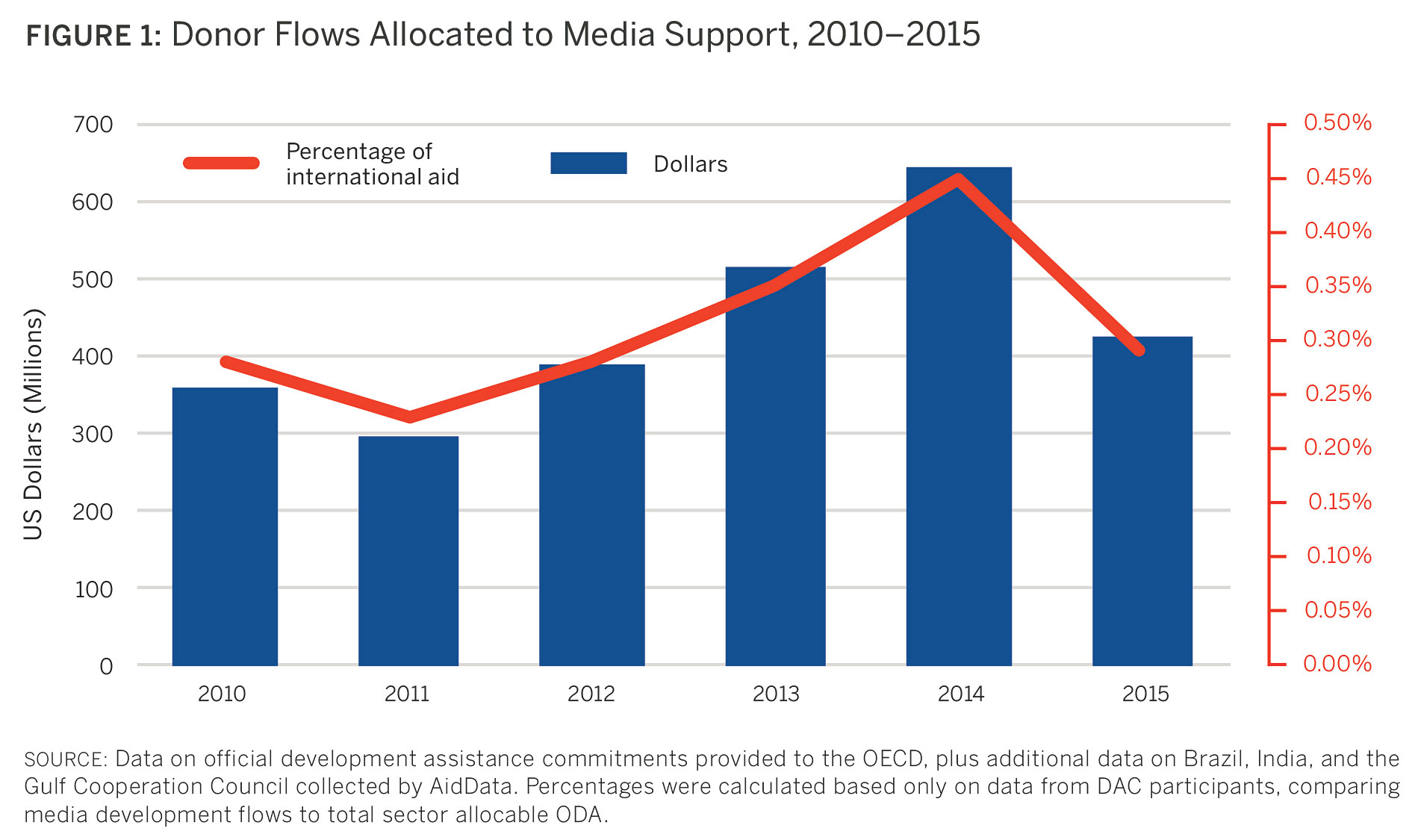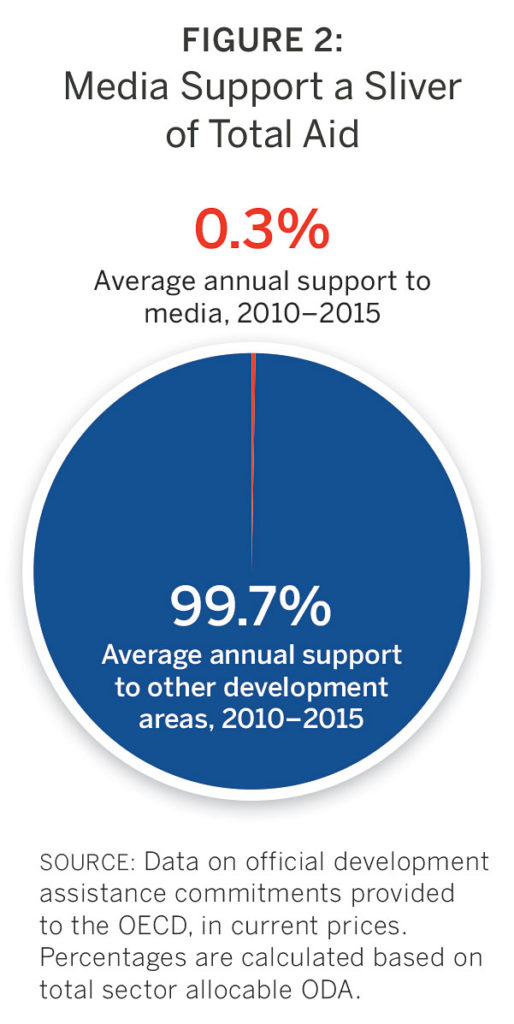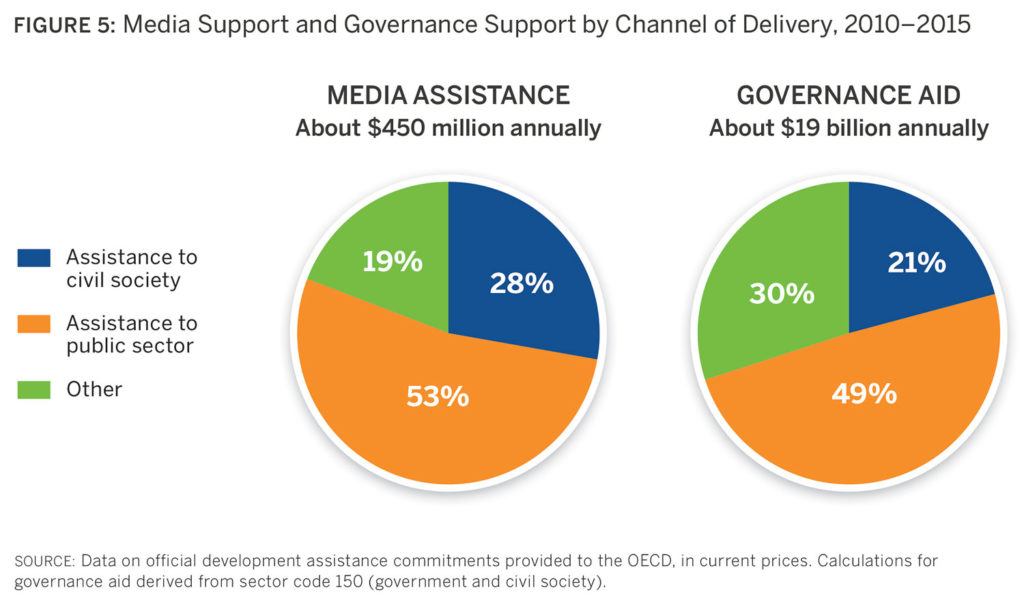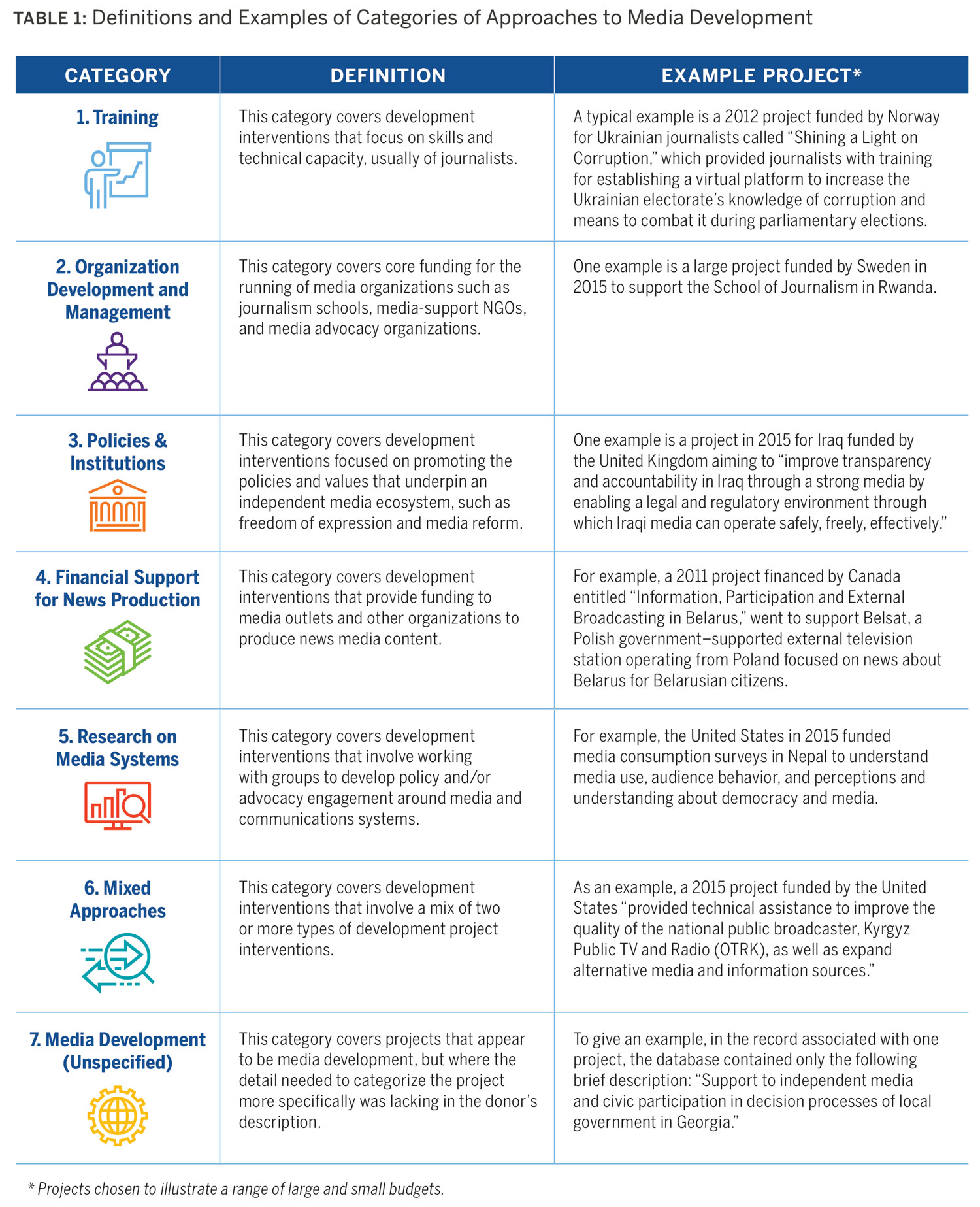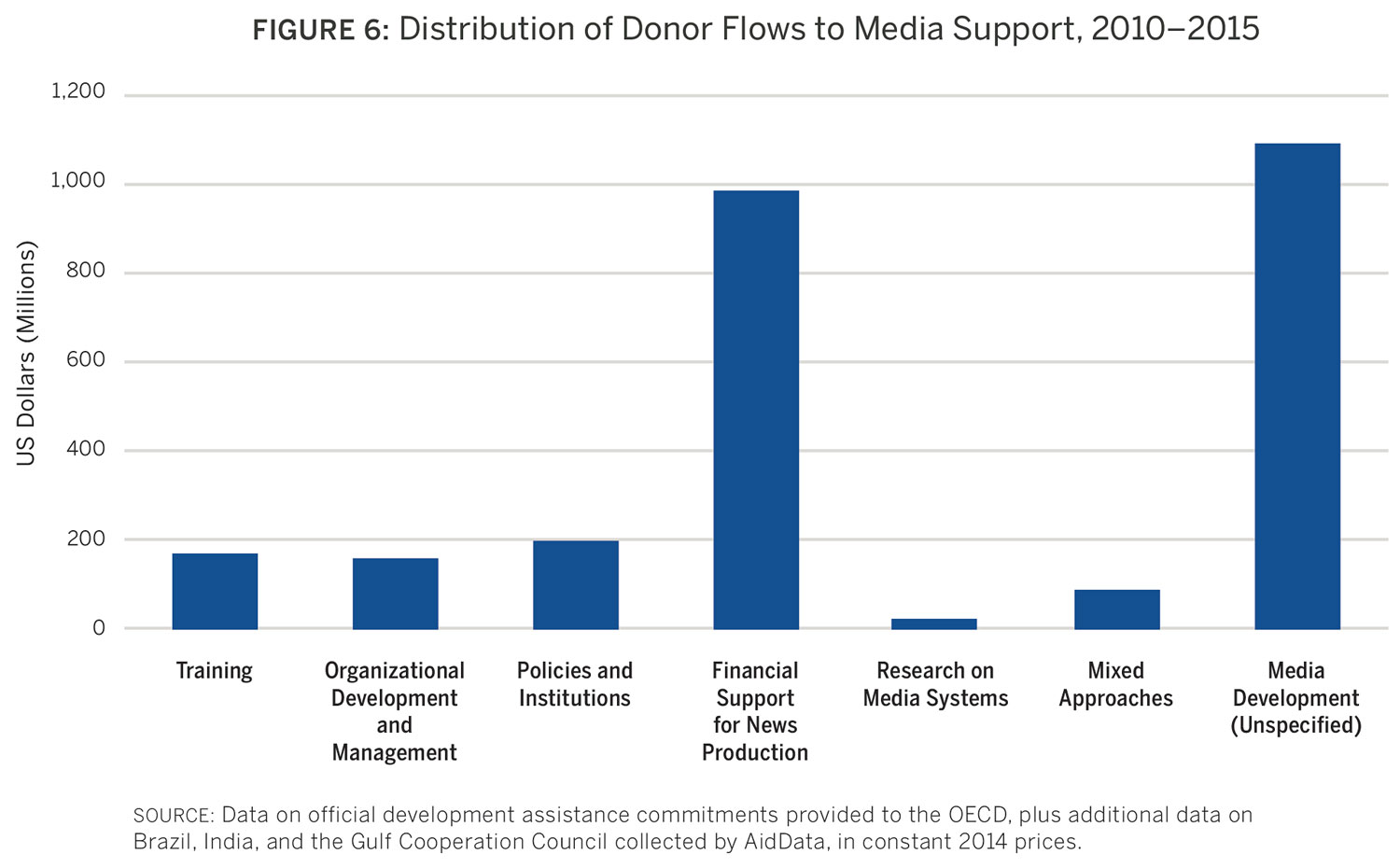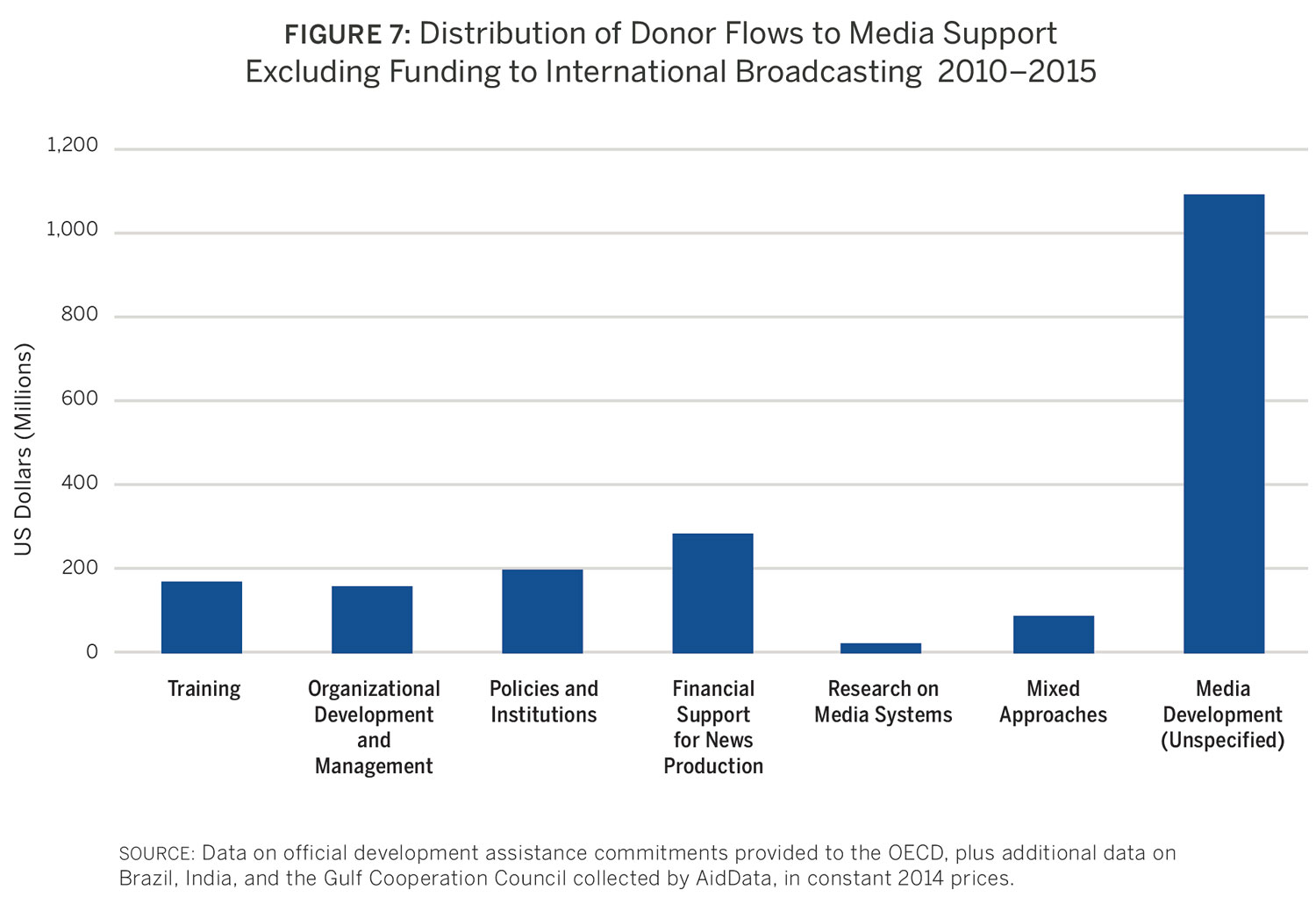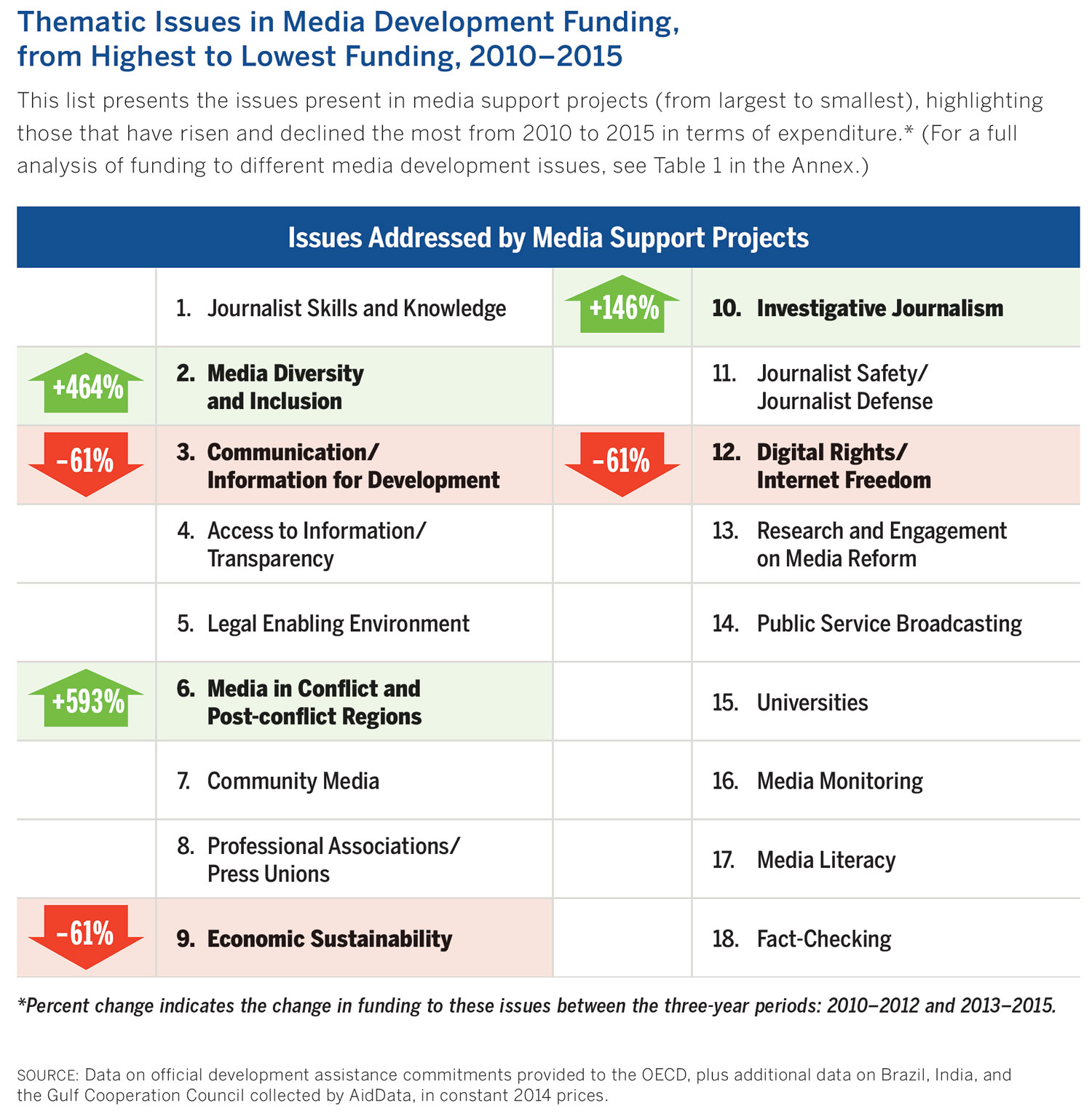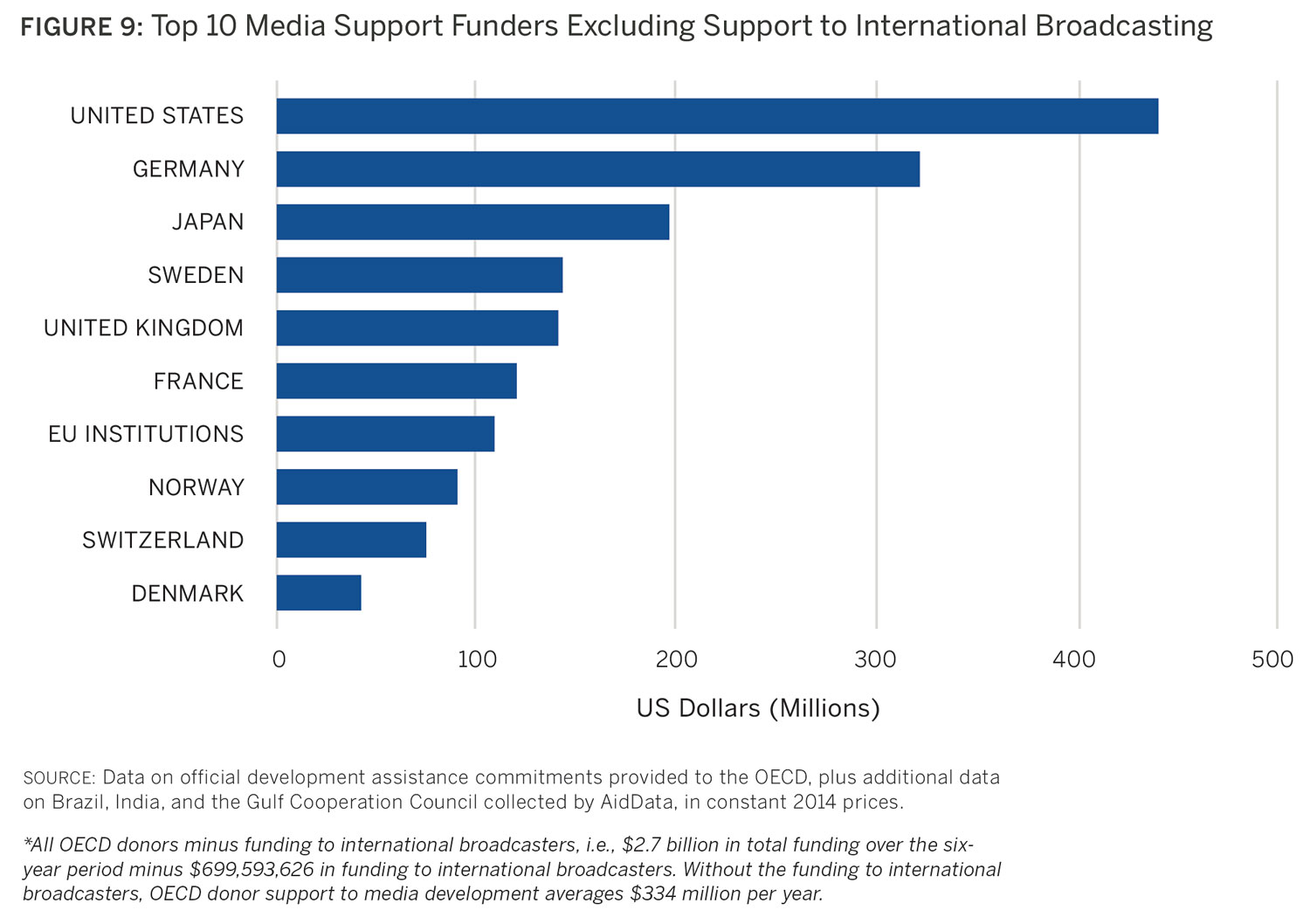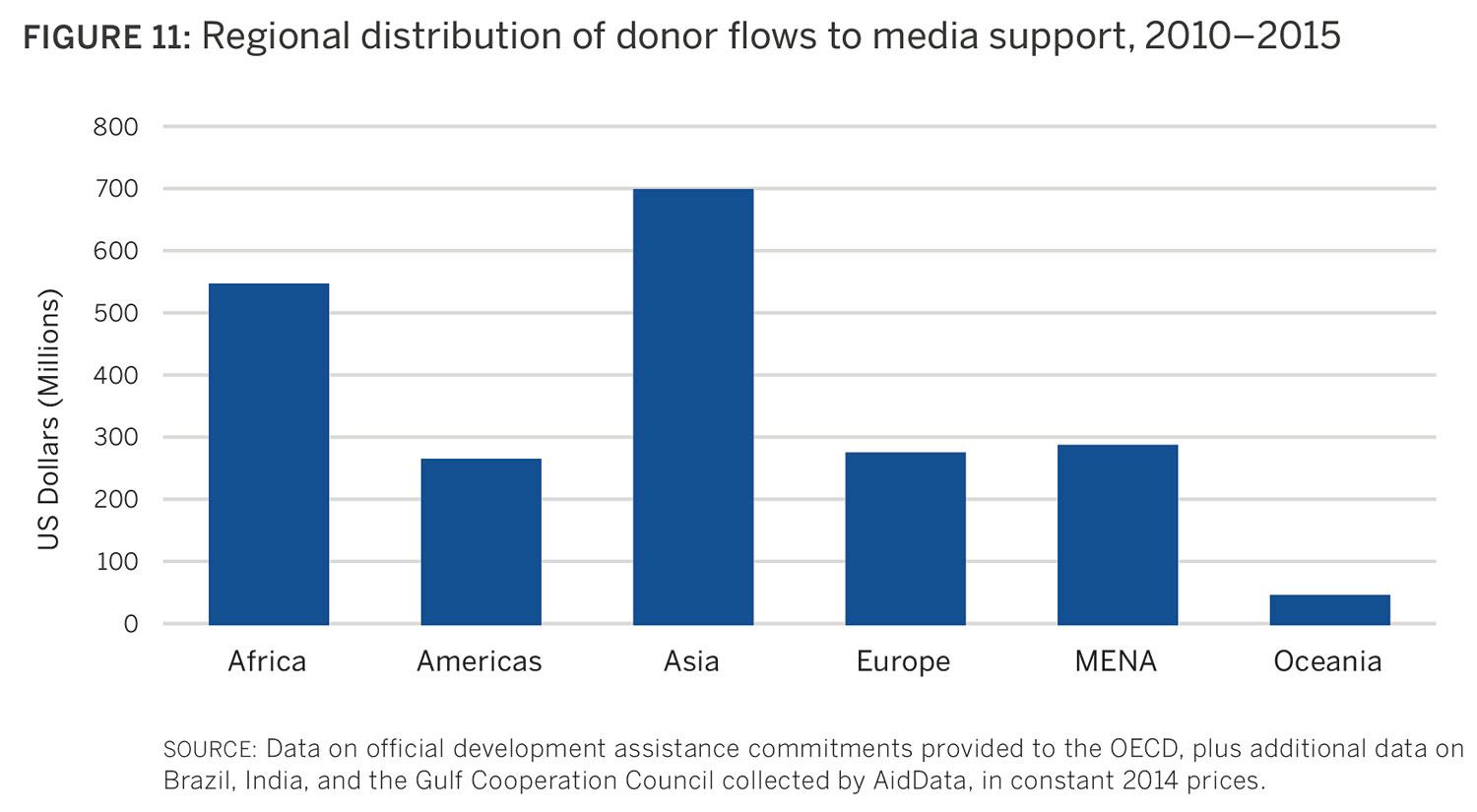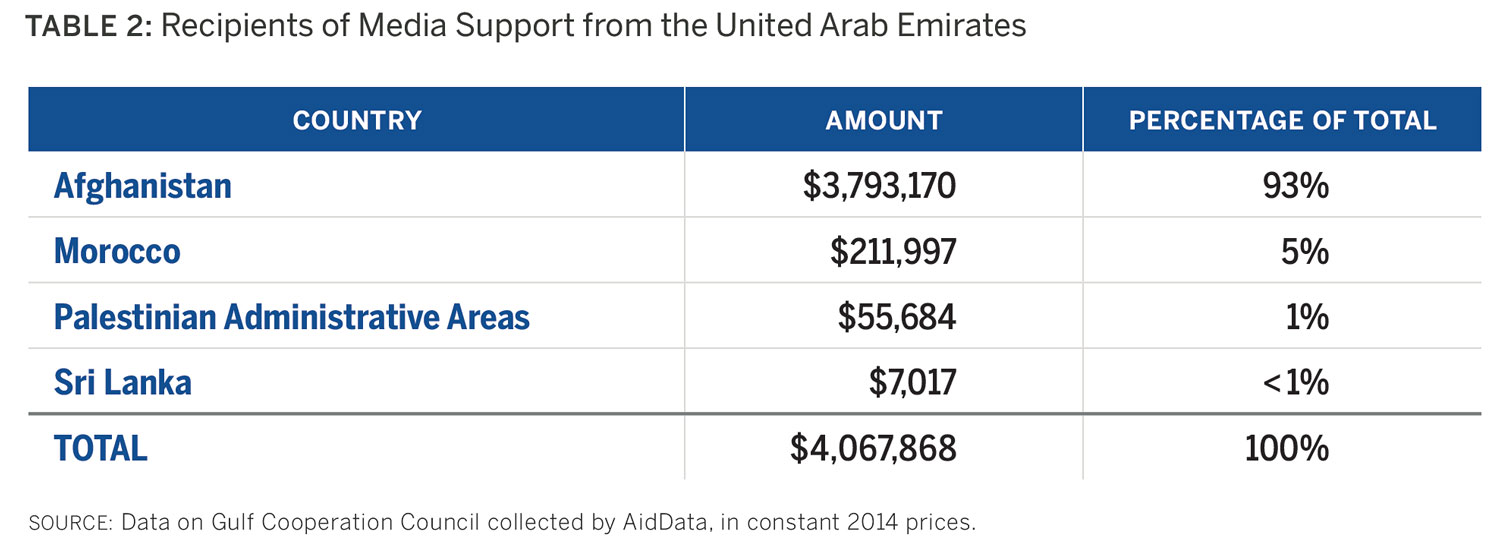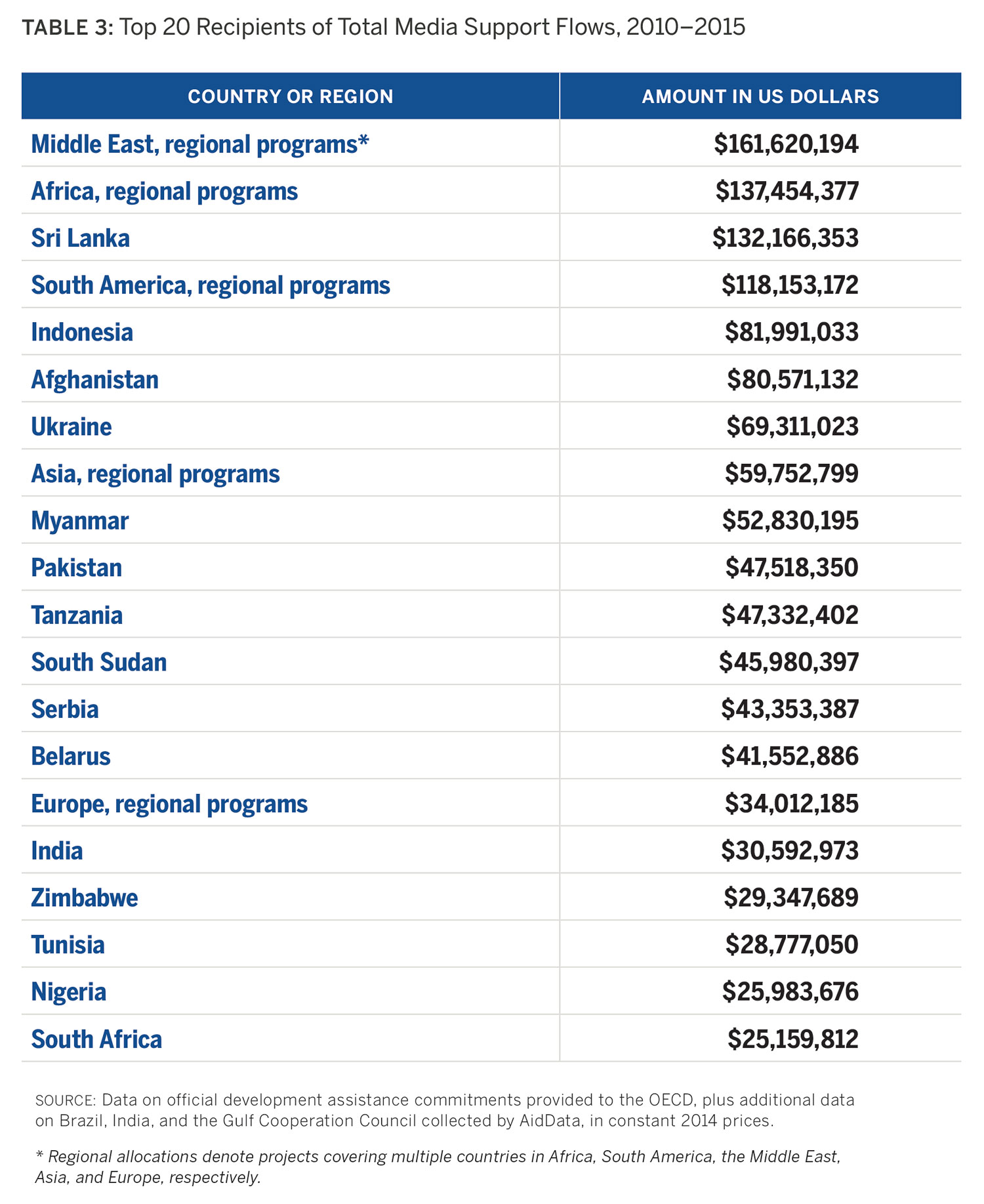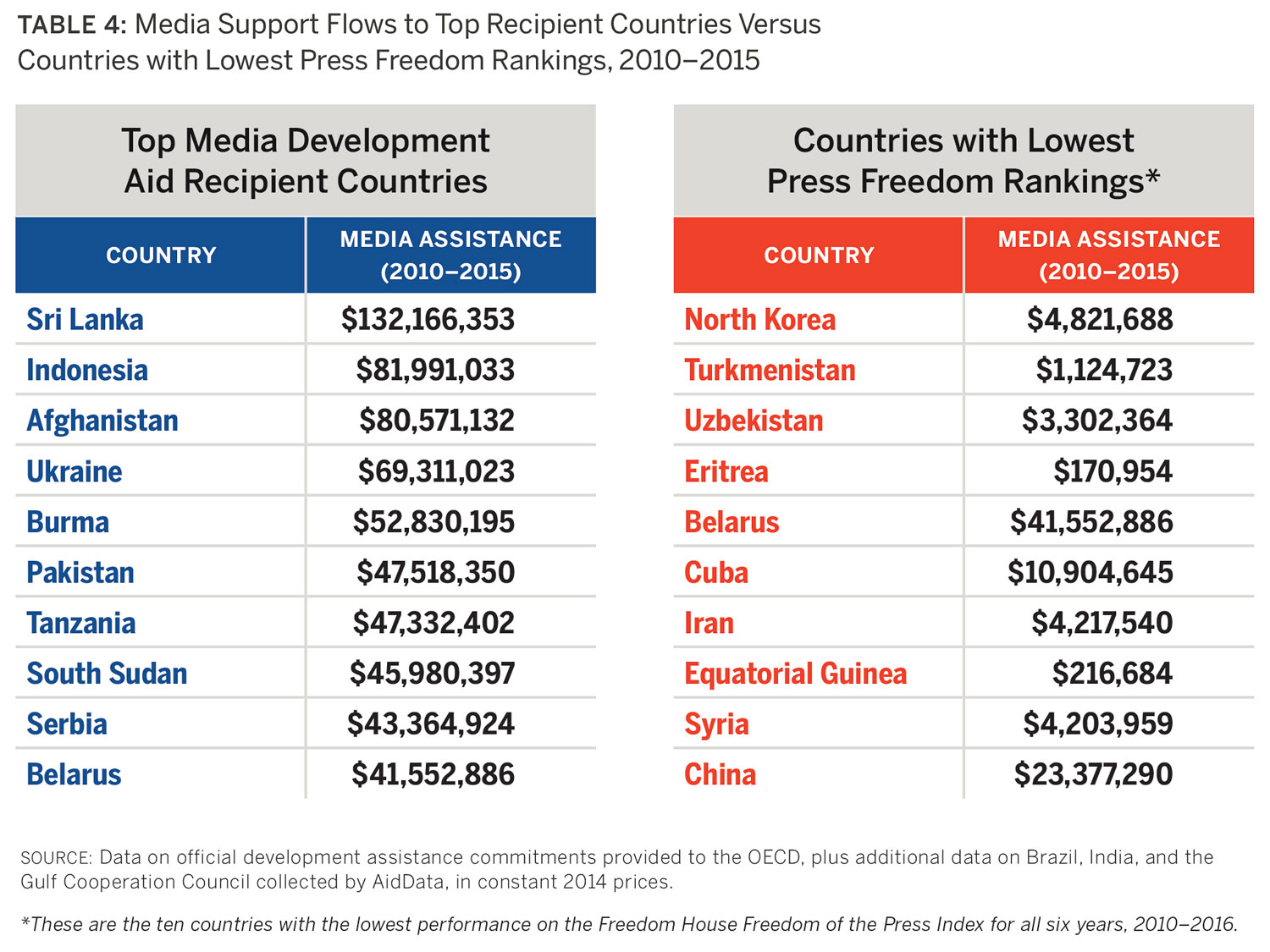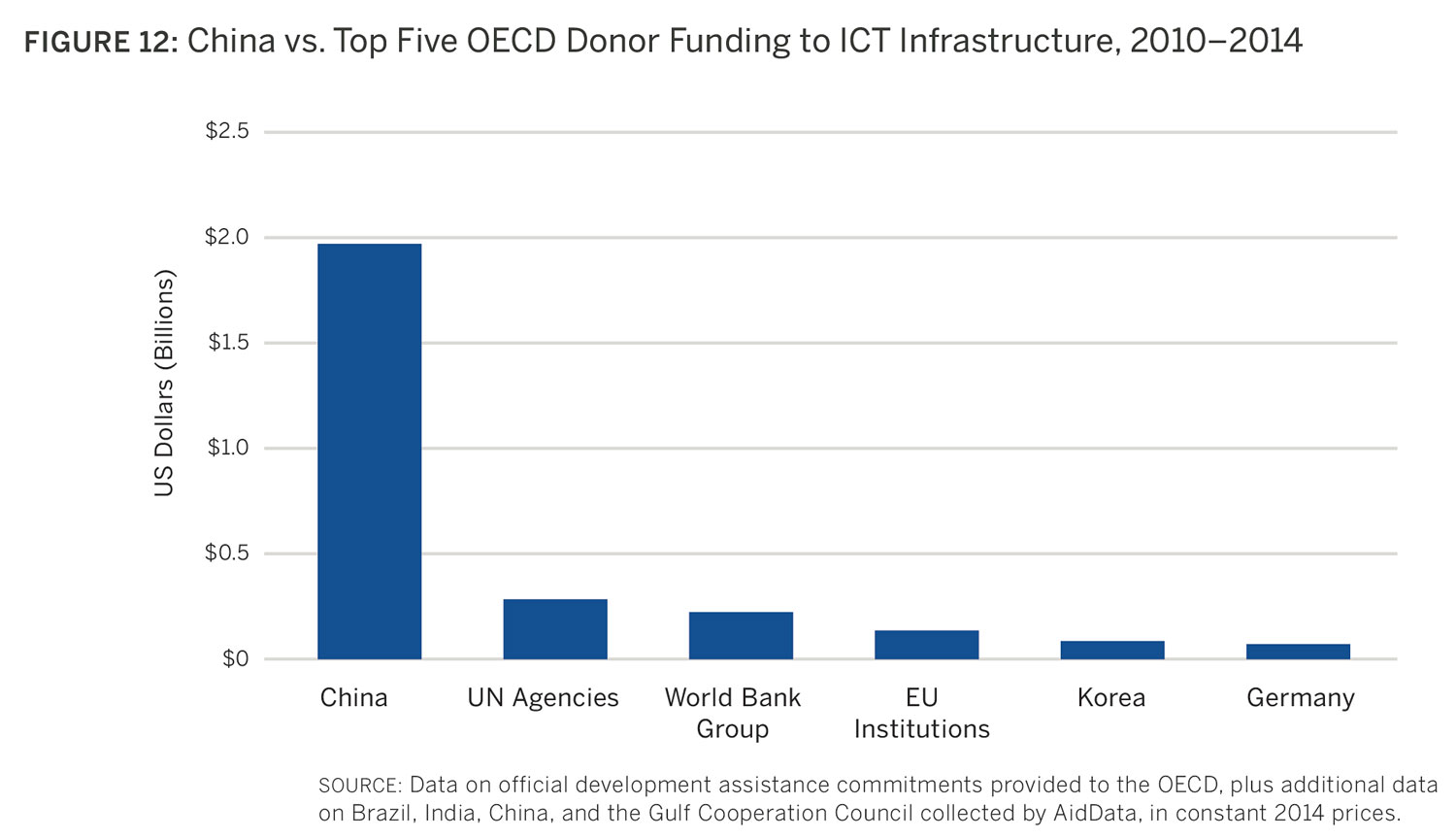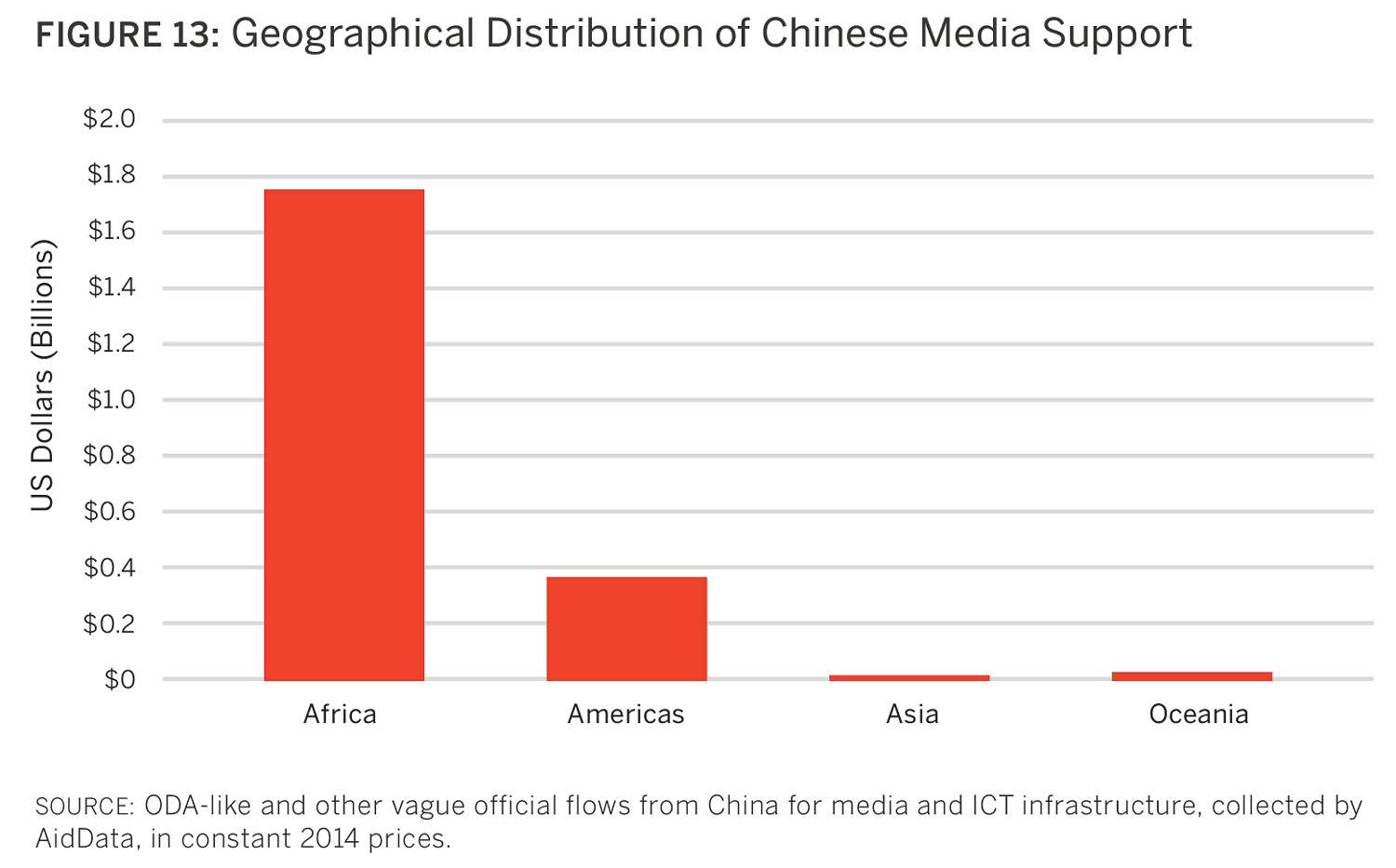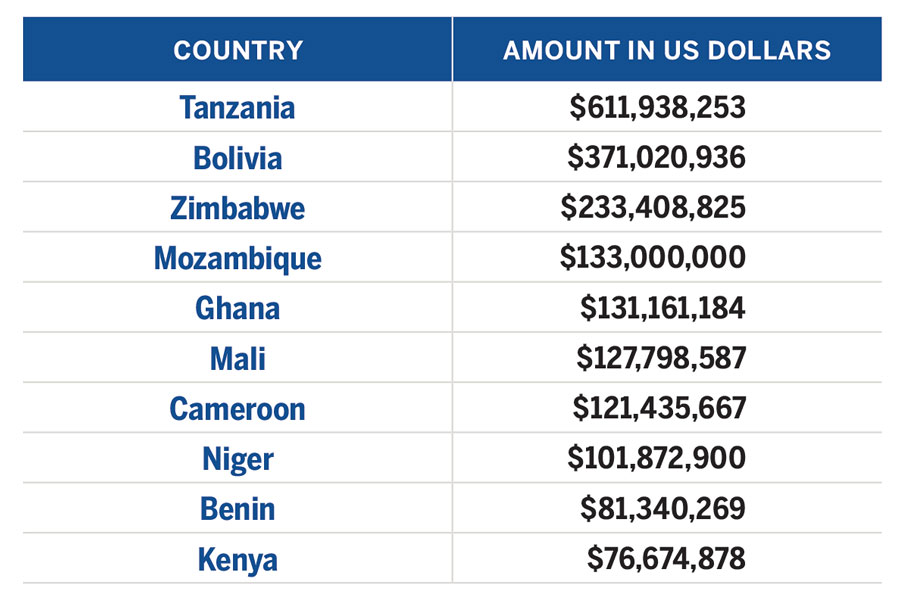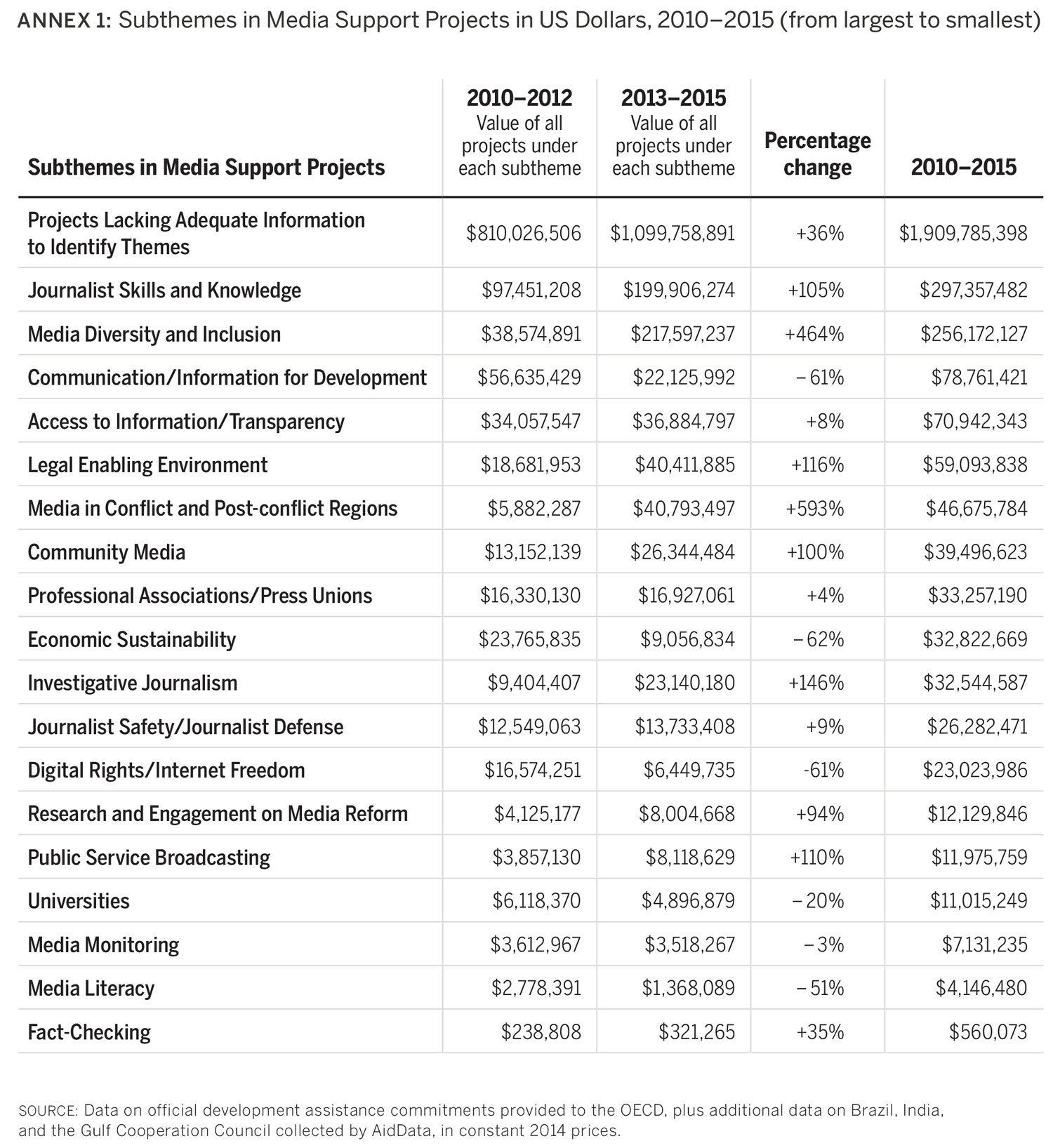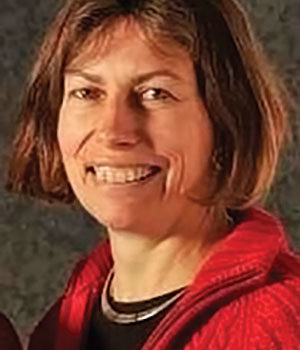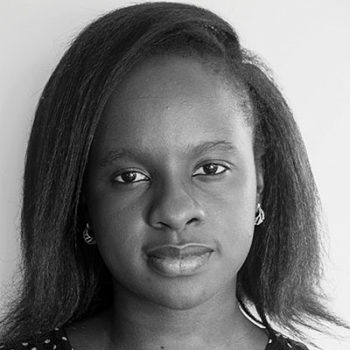Key Findings
When donors provide assistance to the media sector, they frequently back projects that aim to strengthen the media’s contribution to good governance in some way or another. This kind of funding is consistent with recent declarations made by the international community on the importance of protecting independent media for the sake of democracy and development. Yet, in the bigger picture, donors still only commit a tiny fraction to this sector and appear to be responding slowly, if at all, to the unique challenges of press freedom in the digital age.
• Media assistance represented on average just .3 percent of total official development aid (ODA) between 2010 and 2015.
• Donor flows to media are small, but are holding steady.
• China is an increasingly active player in terms of global media aid flows, although its interventions are largely focused on developing infrastructure and take the form of loans rather than development grants.
Analyzing Aid Flows amid a Growing Media Crisis
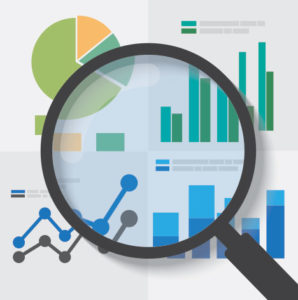 Attacks on the media are growing, and with journalism weakened already by disruptions to its business model, those assaults are more effective than ever. According to Freedom House’s global index, press freedom has fallen to its lowest point in 13 years, and nothing seems to be checking that fall, with recent declines registered even in countries regarded as model democracies. Canada, the United States, Poland, New Zealand, and Namibia have all slipped in the most recent press freedom rankings.1
Attacks on the media are growing, and with journalism weakened already by disruptions to its business model, those assaults are more effective than ever. According to Freedom House’s global index, press freedom has fallen to its lowest point in 13 years, and nothing seems to be checking that fall, with recent declines registered even in countries regarded as model democracies. Canada, the United States, Poland, New Zealand, and Namibia have all slipped in the most recent press freedom rankings.1
Outside of the traditional measures of press freedom, there are other troubling signs for independent media. According to the Edelman Trust Barometer, media have become the least trusted institution in their annual survey, with seven out of 10 people globally saying they are concerned about weaponized campaigns of false information.2 Meanwhile, ethical and trustworthy journalists continue to face economic headwinds in the digital environment; Google and Facebook collectively took over 60 percent of global online advertising revenue in 2017, according to figures from the World Advertising Research Council.3
In this context, it is more urgent than ever to support the brave efforts of all those upholding free, impartial, and pluralistic journalism and news media.
So how much money do the world’s official aid donors—the bilateral and multilateral funders like USAID and the World Bank—give to help independent and public-service-oriented media build free and open societies globally? According to the estimates in this report, about $454 million per year of official development assistance is directed to the media sector, but that number does not tell the whole story. Is financial support to media development increasing, falling, or holding steady? What kinds of approaches and issues are being favored by the governments, multilateral agencies, and private donors that provide assistance to media development? Which countries and regions receive the most support?
To answer these questions, CIMA made an unprecedented effort to sift through a database with thousands of projects to more accurately identify flows going to media development and to provide the most granular analysis yet of how those funds are being spent. Given the new analytical approach of this report, it should not be regarded as simply an update on previous CIMA reports.4 The analysis presented in this report is meant to inform current debates on how international assistance can support an effective response to the new and evolving threats to freedom of the press. That response will be led by journalists, civil society, groups, reform-minded officials and many other actors, but donors can play a crucial role by channeling adequate and timely resources to actors committed to upholding democratic values in global media systems.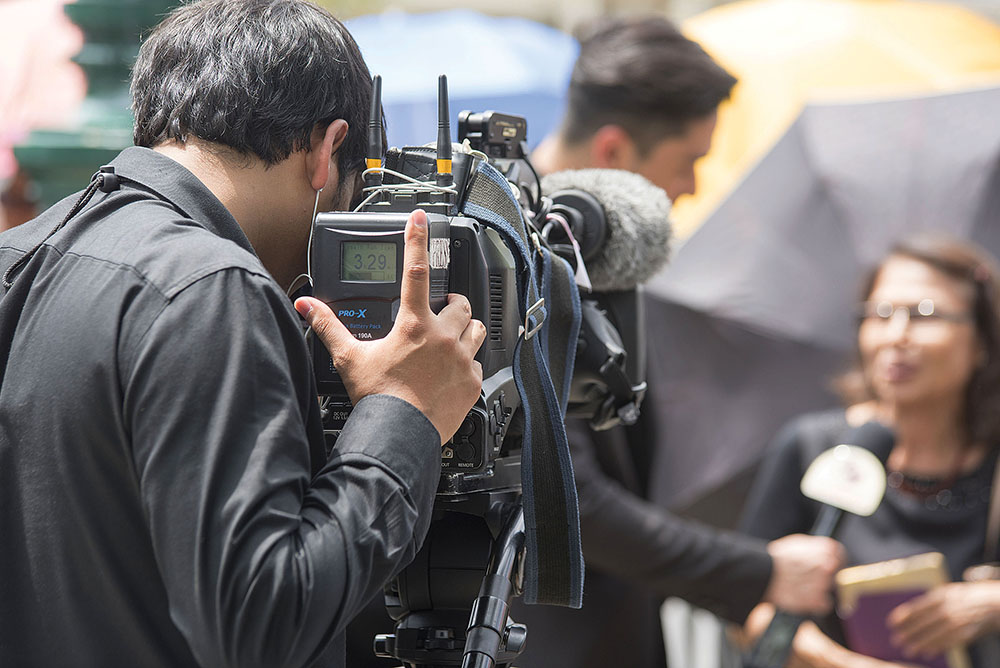
Donors See Media as a Pillar of Governance and Democracy
This report reviews and measures how donors are supporting media and free expression as part of their overseas aid budgets. For this analysis, the authors and the CIMA team joined with AidData to analyze the latest figures available from a range of sources including the Organization for Economic Cooperation and Development’s Creditor Reporting System (OECD-CRS) database on international aid flows, as well as, for the first time, data acquired on the international funding to the media sector coming from China and the Gulf States.5 For a full description of data sources, please see Annex 2.6
Our analysis of aid flows going to the media sector indicates that major donors recognize that support to media is indeed integral to sustaining democracy and good governance. Official development assistance to foster and sustain independent media in developing countries is holding steady, perhaps even rising slightly in the 2010–2015 period, but the most encouraging signs are in how that assistance is being spent.7 Rather than financing projects that emphasize the economic or technological aspects of the sector, donors are supporting projects that seek to bolster the media’s public service function with an emphasis on its ability to promote tolerance, pluralism, and democratic dialogue. Donors clearly want to be a part of the solution to the growing crisis confronting news and information. Still, the analysis also underscores that donors are not responding fast enough to the unique challenges to press freedom in the digital age, or investing enough in the national and regional coalitions needed to sustain bottom-up, long-term strategies for ensuring vibrant and independent media. The challenges to independent media today are both structural and complex. The old rules and assumptions no longer hold as societies everywhere renegotiate the political and economic foundations of independent media. Long-standing approaches—frequently emphasizing skill development for journalists and legal protections against overt forms of harassment or abuse—will not be effective in this environment. As previous Center for International Media Assistance (CIMA) reports have found, there are signs that international assistance is slowly reorienting towards the environmental challenges to independent media, but this shift may not be happening fast enough.8
Because of the greater detail available to us, we have been able to reflect a truer picture of media support: from tiny grants for freedom-of-expression workshops, to massive multimillion dollar projects for the digitalization of terrestrial TV broadcasting. We have separated grants to support media development from loans for information and communications infrastructure and telecommunications (e.g., fiber optic networks), and we have also distinguished media development from projects that can be construed as public diplomacy or strategic communications: interventions that involve producing and disseminating content to achieve donor diplomatic goals. However, the sorting process unavoidably reflects the inconsistencies in how donors report their support to media. For instance, one donor may appear to be a bigger supporter of media assistance than another simply because they report more spending in this area to the OECD database. So, as with any analysis of any dataset, this report contains many caveats and qualifications. The Development Assistance Committee (DAC) of the OECD maintains a database of aid flows that includes 30 official members of the DAC9 and 20 non-DAC members.10 To simply our presentation of the data, we will refer to donors who report their aid to the DAC database as “DAC participants.” Limiting our analysis to this group was necessary in some cases to compare against other aid flows. In most of the cases, though, the analysis uses data from DAC participants as well as data on Brazil, India and the United Arab Emirates obtained by AidData (see Annex 1 for a detailed methodology). We call this group “DAC participants and other bilateral media development donors.” Data on China obtained by AidData is analyzed separately
Definitions
Media: “The main means of mass communication (broadcasting, publishing, and the internet) regarded collectively” (Oxford English Dictionary). In this report we use the term mainly to encompass the news media, journalism, and freedom of expression.
Media Support or Media Assistance: The financing by donors of media development.
Media Development: Evolution and change in the fields of news media and communications. Such change relates to a range of institutions, practices, and behaviors including the rule of law, freedoms of expression and press, education systems for journalists, business environments, capacities of journalists and managers, as well as support for a diversity of views in society.
Note that throughout this report we distinguish between “media development” (as a process that happens endogenously—though sometimes with external support) and “support/assistance to media development.”
The data from China are also new, and, thanks to AidData’s significant efforts on this front, we are able to devote special attention to the data on China. China is investing massively in this sector; the database that informs this report contains nearly $2.1 billion worth of China-financed projects in the media sectors of developing countries. These projects, however, cannot accurately be called support to “media development” as CIMA has defined it, and are therefore analyzed separately in a section at the end of this report. To begin with, the Chinese-funded projects in the dataset do not enshrine the values of pluralism, independence, and democratic dialogue that are core to media development. China tends to support ICT infrastructure and government media rather than freedom of the press, journalist and media outlet independence, or media that hold governments to account. China also delivers its support to the sector primarily through loans, frequently tied to Chinese corporations, with loan terms that may not be concessional enough to qualify as development assistance at all (the OECD requires that loans offer at least a 25 percent concession to be considered foreign aid). Nevertheless, given the growing influence of China on global media, the country’s activities in this sphere are important to consider and contrast with that of other donors. Finally, this report shows that new donors are investing in media. Several new countries have joined the OECD’s Development Assistance Committee since 2013, including the Slovak Republic and Iceland, and they show up as media supporters in the data for the first time. Another change from previous reports is that the Bill & Melinda Gates Foundation (Gates Foundation), one of the biggest private development donors in the world, is also included in our dataset because the foundation has voluntarily reported its spending to the OECD.
The Importance of Aligning Support and Need
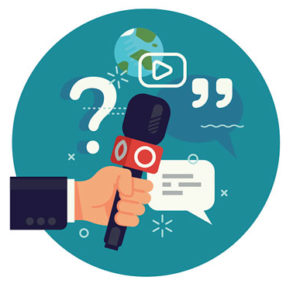 While this report is primarily about the money side, it is worth looking briefly at the policies and strategies surrounding media development to help us understand whether the funding flows are consistent with the needs and demands of this sector.
While this report is primarily about the money side, it is worth looking briefly at the policies and strategies surrounding media development to help us understand whether the funding flows are consistent with the needs and demands of this sector.
Over the years since the end of the Cold War, media development has been shown to play a role in strengthening democracy, economic development, political discourse, and good governance.11 Western donors have gotten behind this to some extent, allocating some funding to it and making commitments in terms of policy. For instance, in 2011 the OECD/DAC network on governance (GovNet) selected the media, alongside parliaments and political parties, as “one of three key strands requiring greater clarity and focus in donor support to domestic accountability.”12 Significant too was the inclusion in the post2015 Sustainable Development Goals of Goal 16, which focuses on improved governance, including a target to increase “public access to information and protect fundamental freedoms in accordance with national legislation and international agreements.” So, it is clear that supporting independent media is now becoming part of the global development agenda as a component of assistance to good governance, albeit (as the figures in this report attest) a relatively small part.
Official declarations on independent media are encouraging, but donor backing for this area is still fragile, and the challenges have never been greater. Back in 2015 a report for CIMA noted the following issues with donor funding, and they continue to be problematic:13
- Support for independent media tends to be politically sensitive, contributing to substantial risk aversion on the part of donors.
- Many recipient countries are unwilling to allow donor involvement in their domestic media sectors.
- Relatively few projects focus on the business side of independent media, and there has been limited support for journalism schools and education.
- Sustainability is a major challenge, with many donor-supported media outlets closing when funding ends.
- A lack of institutional memory and strategies for learning on the part of donors impedes results and evolution of the field.
Furthermore, the development community now struggles with new, complex, and overlapping threats to vibrant media. These include:
- The decline of traditional business models for media because of the rise of online and social media.14
- Resurgent authoritarianism and a culture of animosity towards journalists.
- Media concentration and capture of entire media landscapes by wealthy individuals tied to politicians and/or by politicians themselves.15
- The phenomenon of supercharged disinformation campaigns using digital media.16
- The concomitant decline in trust in media and democratic institutions.17
Media development is therefore at a critical juncture, and new strategic approaches and a different scale of effort are required to respond effectively. Collecting and analyzing data and supporting research—as this report does—can help facilitate informed debate among policy makers and support strategic policy forums where corrective actions to these problems can be debated and agreed upon.18
The Dataset
 The data for this report comes from AidData’s core research release 3.0, which incorporates commitment data from the OECD Common Reporting Standard (CRS) database and official data available on other donors that are not a member of the OECD’s Development Assistance Committee. Furthermore, this dataset was supplemented with 2014–2015 commitment data directly from the OECD CRS and AidData’s datasets for China and GCC donors collected using the Tracking Underreported Financial Flows (TUFF) methodology. All of the data in this report from secondary sources has been corroborated by AidData.
The data for this report comes from AidData’s core research release 3.0, which incorporates commitment data from the OECD Common Reporting Standard (CRS) database and official data available on other donors that are not a member of the OECD’s Development Assistance Committee. Furthermore, this dataset was supplemented with 2014–2015 commitment data directly from the OECD CRS and AidData’s datasets for China and GCC donors collected using the Tracking Underreported Financial Flows (TUFF) methodology. All of the data in this report from secondary sources has been corroborated by AidData.
The OECD CRS data were extracted from commitments listed under the “government and civil society” sector (15153 Media and free flow of information) and under the “communications” sector (22010 Communications policy and administrative management; 22020 Telecommunications; 22030 Radio/television/print media; 22040 Information and communication technology).
Official Support to Media in 2010-2015: Findings
Donor Flows to Media Are Small but Holding Steady
Our analysis of the data shows that for the six years from 2010 to 2015, DAC participants and other bilateral donors (excluding only China) together funded media development to the tune of $2.7 billion, or an average $454 million per year over the six-year period. For the most recent year for which we have data, 2015, commitments totaled $487 million (see precise figures below). We believe this shows that donor commitments are holding steady and could even be said show a rising trend. Furthermore, self-reported data from donors gathered by CIMA this year corroborate the finding that donor support for global media development “has remained relatively constant.”19 However, as we show in Figure 1, support to media development by bilateral and multilateral donors remains just a tiny part of overall funding for development.
Figure 1 shows the annual total donor support for media development from 2010 to 2015, as well as its proportion of total international aid. The red line in Figure 1 represents the percentage of total official development assistance (ODA) allocated to media, averaging 0.3 percent of total sector allocable ODA over the period. This is represented in Figure 2, which shows that support to media development by donors is just a tiny sliver of overall funding for development.
Bilateral Donors Give More Aid to Media,20 Grants Outweigh Loans21
To understand the types of donors supporting media development, in Figure 3 we have divided the donors in the OECD and Gulf states into two categories, bilateral and multilateral, and shown their respective shares as a percentage of the total. Bilateral flows account for 92.5 percent of all official flows to media, with flows from multilaterals like United Nations bodies and the World Bank at 6.5 percent. Since the database included only one private donor (the Bill & Melinda Gates Foundation), a comparison with private charitable flows to media was not possible, though research (by CIMA and others) shows that private sources of aid make to a significant contribution to the media assistance field.22
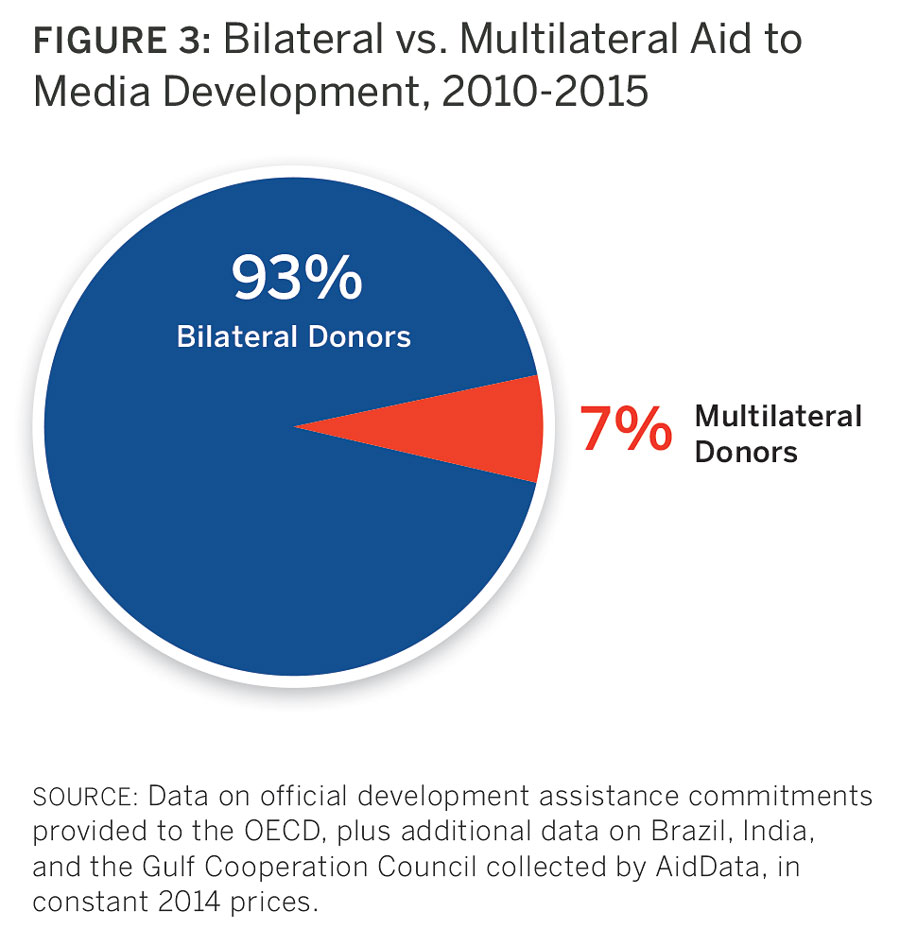
The Gates Foundation, according to the data it reports to the OECD, contributed more than $11 million to international media support between 2010 and 2015.23 That amount, however, may represent only a portion of its actual portfolio in this sector, given that in 2016 alone the Gates Foundation reported to CIMA that it spent $23 million on media development support.24 Other private foundations are also big spenders on media support; for example, the Open Society Foundation spent nearly $11 million in 2016 and the Knight Foundation spent approximately $25 million, though most of this was directed to US-based recipients.
Private donors tend, on average, to give a larger portion of their support to the media sector. Whereas the percentage dedicated to media support among DAC participants is a mere 0.3 percent, US private donors have recently dedicated 2.2 percent of their giving to this area.25 Another difference is that private donors tend not to invest so heavily in media infrastructure and, unlike bilateral donors, will shy away from funding governmental media in recipient countries. A useful follow-up to this report would include more data on how the spending in this sector by such private donors is changing.
Figure 4 shows what proportion of these donor flows are loans and what proportion grants. We see that grants constitute the biggest proportion of aid (87 percent) as opposed to loans (8 percent). As one would expect, loans tend to be offered by multilateral agencies such as the World Bank to recipient governments in the Global South, mostly for infrastructure projects, such as the conversion of TV transmission networks from analogue to digital. A small level of assistance to media (4 percent) is through what the OECD calls “equity investment,” which includes the purchase of goods or an investment in shares without the expectation of the capital returns associated with private investments.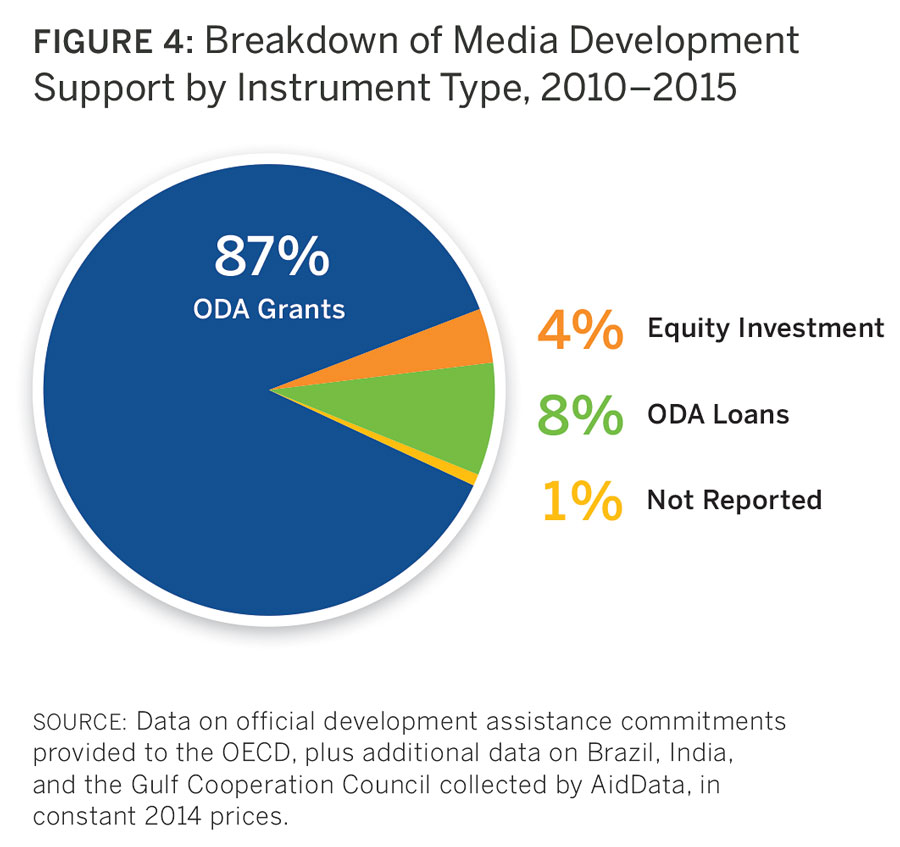
Media Assistance Is Mostly Channeled through Governments
As Figure 5 illustrates, the majority of media assistance is channeled to public sector institutions and civil society organizations. The significant amount of media assistance channeled to public sector institutions is partly explained by funding for international broadcasting. Taking out spending on international broadcasting, the amount of media assistance channeled through nongovernmental institutions (NGOs) and civil society organizations rises from 28 percent to 37 percent, while the proportion going to public sector institutions drops below half. This distribution—and particularly the portion channeled through NGOs and civil society organizations— is a potentially important indicator of the degree to which media development assistance is going to support independent media, pluralism, and democratic dialogue since meaningful and sustainable media reform is known to require efforts from a broad range of actors beyond the public sector.26 Figure 5 provides a comparison to how governance aid is distributed through these same channels.
How is Media Assistance Being Spent? Shifting Approaches and Strategies
Seven Main Categories Help Make Sense of the Data
For this report, we sorted media development projects in the database into one of seven categories, six of which describe a different approach or strategy to media development. The seventh category was used for projects without enough descriptive information to be assigned to any of the other categories. As can be seen in Figure 6, with $1 billion over the six-year period, the unspecified category is the largest by a considerable margin as many of the financial flows are reported under their broad umbrella project headings, or because donors submit vague or incomplete project descriptions to the OECD’s database.
The large size of the financial support to news production category in Figure 6 is attributable to how some donors, notably Germany and the Netherlands, include large subsidies for their own international state broadcasters in their international aid to media (e.g., Deutsche Welle and Radio Netherlands, respectively). This inconsistency in how donors report their international broadcasting budgets also affects the comparison between donors, as can be seen by comparing Figures 6 and 7.27 The latter, Figure 7, gives a snapshot of how support to media development is distributed among these categories when support for international state broadcasters has been removed.
That Germany, and to a lesser extent, the Netherlands, France, and the United Kingdom include their support to international broadcasting (e.g., Deutsche Welle, Radio Netherlands, BBC World Service) in the OECD/DAC data suggests that, for these donors, informing and influencing their foreign audiences through media is part and parcel of the media development process. But while support to international broadcasting can have important secondary impacts on countries’ information environments it could arguably be classed as public diplomacy or “soft power,” and not be regarded as true support to independent media in developing countries. Ideally, it should not take precedence over assistance to media development in the sense of stimulating independent media and freedom of expression inside recipient countries.
Donors Support a Full Range of Approaches to Media Development
Disregarding international broadcasting and the media development (unspecified) category, we can interpret Figure 7 as showing that donors are supporting the full range of media support approaches in a relatively balanced way. This may indicate that donors are shifting slightly towards a wider array of project types and putting policy work and organizational development on a par with the more traditional approaches of supporting news production and journalist training, which have previously tended to dominate this sector. The data show that the first three categories are funded at roughly the same levels (i.e., training, organizational development, and policies and institutions) . Even without counting spending on international broadcasting, financial support to news production remains the largest area of funding, with the least-funded areas being research and mixed approaches.
Priority Issues in Media Development Support
To achieve greater insight into the topics, issues, and concerns that are driving support to media, we applied 18 thematic codes to the projects in the dataset, with each project receiving up to three codes (though many projects had too little information to be labeled with any).
Thematic Issues in Media Development Funding, from Highest to Lowest Funding, 2010–2015 This list presents the issues present in media support projects (from largest to smallest), highlighting those that have risen and declined the most from 2010 to 2015 in terms of expenditure.* (For a full analysis of funding to different media development issues, see Table 1 in the Annex.)
Of all the issues, media in conflict and post-conflict regions received the biggest bump, rising 593 percent in the second half of the period. This can be accounted for by several new and large disbursements going to conflict zones like South Sudan, Afghanistan, Pakistan and Syria during this period. For example, in South Sudan, two projects were funded during the second half of the period by the United States for $6 and $7 million dollars respectively. Another example is a large project funded by Norway called “Reducing Tensions Across the South Caucasus and Central Asia” for $2.5 million, which was disbursed in 2014.
The other striking increases in spending over the period are highlighted in green above. These rises frequently owe to a few large grants on their respective issues, but may not reflect a broader trend in support to media. Funding for projects associated with media diversity and inclusion rose 464 percent in the second half of the period from the first half. The growth of funding to this topic, however, is almost entirely accounted for by many big grants from Germany to its regional language services of Deutsche Welle (e.g., Swahili, Hausa, etc.) being committed in the second half of the period. Our coders counted support for a variety of broadcast languages under media diversity and inclusion.
If it were not for these grants to Deutsche Welle, funding flows on this issue would have held steady across the two periods among the top of the list, showing that media diversity and inclusion is still an important priority in the field.
Investigative journalism spending rose by 146 percent in the second half of the period. This jump can be explained by four big grants to the Western Balkans, Ukraine, and Russia disbursed during this period. The biggest were the Balkan Investigative Reporting Network grant for $5 million from Sweden and another project in Ukraine for $2.1 million that was funded in 2014, the year Russian troops intervened in Ukraine and took control of Crimea. The elections in Rwanda were another significant moment during this period. Here, the data show another large grant for investigative reporting for $2.5 million from the United States to the NGO South of the Sahara to “increase civic engagement and policy dialogue in Rwanda’s political and electoral processes…with [a view to] the upcoming 2016 local government, 2017 presidential, and 2018 parliamentary elections.”
The jump in spending on public service broadcasting was due to a rise in funding to the Middle East and North Africa (MENA) region from $3.9 million in the first half of the period to $8.1 million in the second. This funding was provided mainly by the United Kingdom to Libya, Tunisia, Algeria, and Morocco and, in large part, reflects a concern for improving state broadcasters’ online presence, particularly their appeal to the youth demographic, following youth-led unrest during the Arab Spring and its aftermath.
Those issues that have received decreased funding since 2012—and appear, therefore, to have declined in terms of donor interest—are communication/information for development (down 61 percent); projects to promote economic sustainability (down 62 percent); and projects on digital rights/internet freedom and media literacy (down 61 percent and 51 percent, respectively). The dip in funding for digital rights and internet freedom would be particularly worrying if the downward trend is confirmed in the longer term, given the challenges of digital media and the need for local actors to enshrine democratic norms and standards in digital technologies (to have a voice not only domestically but internationally, where these technologies are being shaped). Whether these themes are confirmed to be on a downward trend or are just indicators of temporary donor fashions will be discerned by future research into aid data.
Donors Match Their Stated Commitments with Money… in Some Cases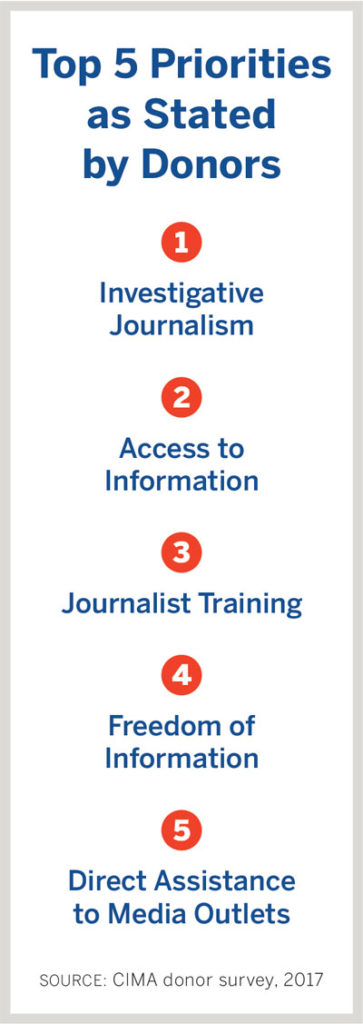
Interestingly, some of these funding patterns tally with the self-reported donor priorities that have been gathered separately by a CIMA-run annual voluntary survey that is sent to certain media development donors.28 In this survey, the top five donor priorities emerged as 1. Investigative Journalism, 2. Access to Information, 3. Journalist Training, 4. Freedom of Information, and 5. Direct Assistance to Media Outlets. While the categories and methodologies are not directly comparable, we can see some congruity between this and our data, which is, in effect, a match between stated donor priorities and actual funding. We can discern a strong and increasing emphasis in both word and deed for:
- Journalist Training
- Investigative Journalism
- Access to Information29
This finding helps pinpoint where donors are truly focusing their support. It must also be noted, however, that funding alone cannot sustain freedom of expression and/or an independent media sector. It is also the unquantifiable support that counts. CIMA’s self-reported survey shows that, from a donor’s viewpoint, “prioritizing” may mean investing staff time and energy in policy documents and forums, information sharing, evidence collection, learning, and strategic planning as much as it may mean investing funds.
Support, However, Is Not Aligned with Demand
Other qualitative findings, against which we can compare our dataset on financial flows, are contained in the results of CIMA’s regional consultations. In 2015, CIMA began hosting a series of consultations around the world to solicit views from a broad range of stakeholders on the media development priorities in their regions.30 These consultations do not reflect the priorities of donors, but those of media practitioners and advocates (e.g., media managers, journalist associations and trade groups, freedom of expression advocacy groups).
While the results are, again, not directly comparable to the themes identified in our data because the categories are not the same, a couple of points of convergence emerge:
Needs from the above lists such as journalistic professionalism, media regulation, and sustainability of media outlets appear to be areas that donors are funding, as evidenced in the large blocks of spending in our data for training, organizational development and management, and policies and institutions as well as the funding for subthemes (Table 1) that indicate relatively substantial support for economic sustainability and legal enabling environments. However, there are also points of divergence, including the following:
- Media literacy, which features prominently in the CIMA regional consultations but is very low on the list of funding priorities in our dataset.
- Governance of digital media, which does not seem to feature in our dataset in a meaningful way.
- Conversely, investigative journalism stands out as a relatively well funded category in our data, whereas it does not seem to figure in CIMA’s regional consultation’s list of priorities.
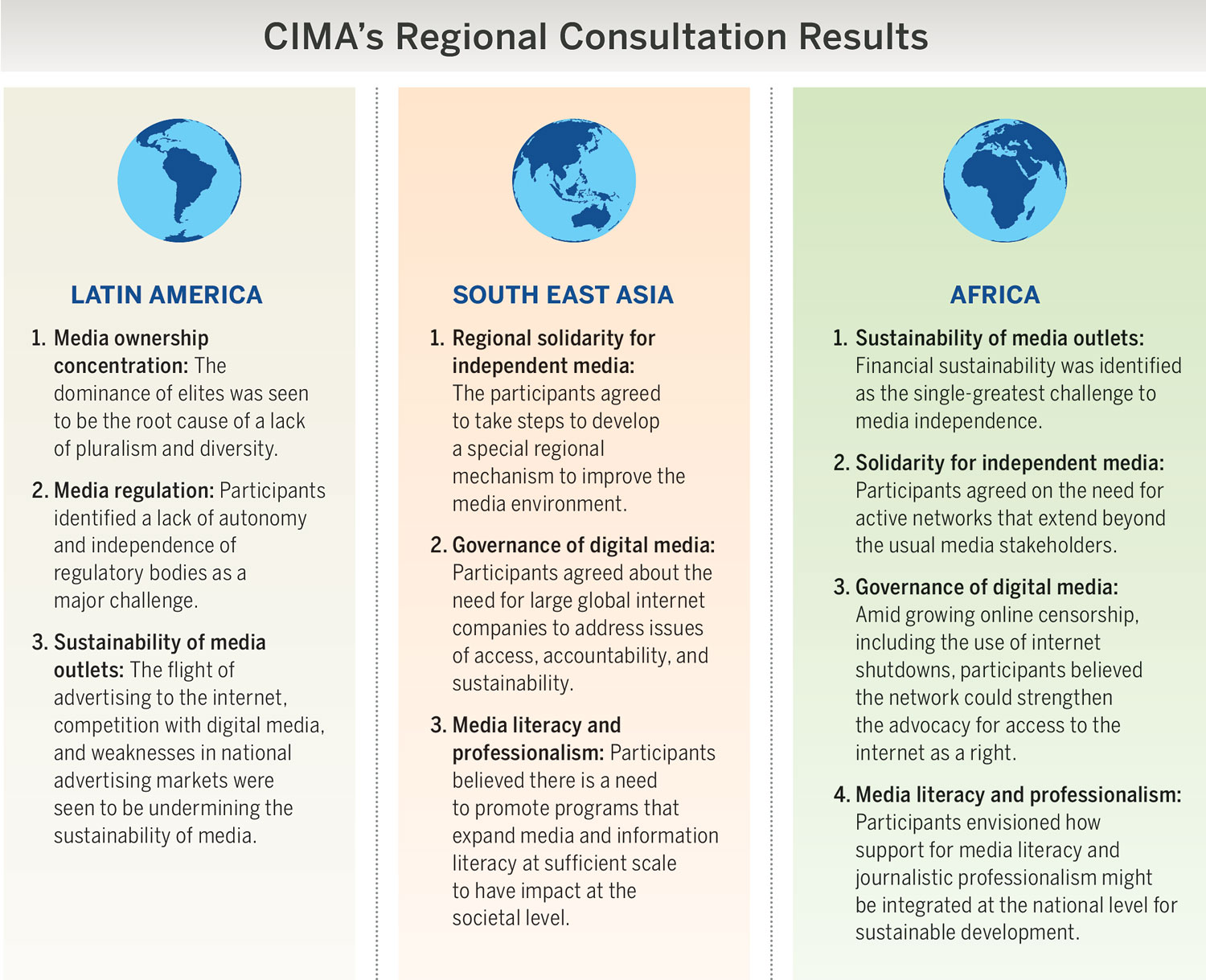
The Biggest Donors and their Strategies
Top Donors: Germany, the United States, and Japan
The next chart, Figure 8, shows the top 10 media support donors and the totals they committed over the six-year period from 2010 to 2015. The biggest providers of development cooperation for media assistance were Germany ($893 million), the United States ($440 million), Japan ($196 million), the United Kingdom (UK) ($173 million), and Sweden ($142 million). This has not changed substantially since 2012 when CIMA and the OECD/DAC performed a similar exercise in ranking, the main differences being that the UK has moved up to fourth place (from seventh place in 2012), Norway has moved down to ninth place (from sixth place in 2012), and France and the Netherlands are in the top 10 whereas they were lower down the ranks in 2012. Denmark, Australia, and Korea have fallen out of the top 10 in 2010–2015, despite ranking eighth, ninth, and tenth, respectively, in 2012.
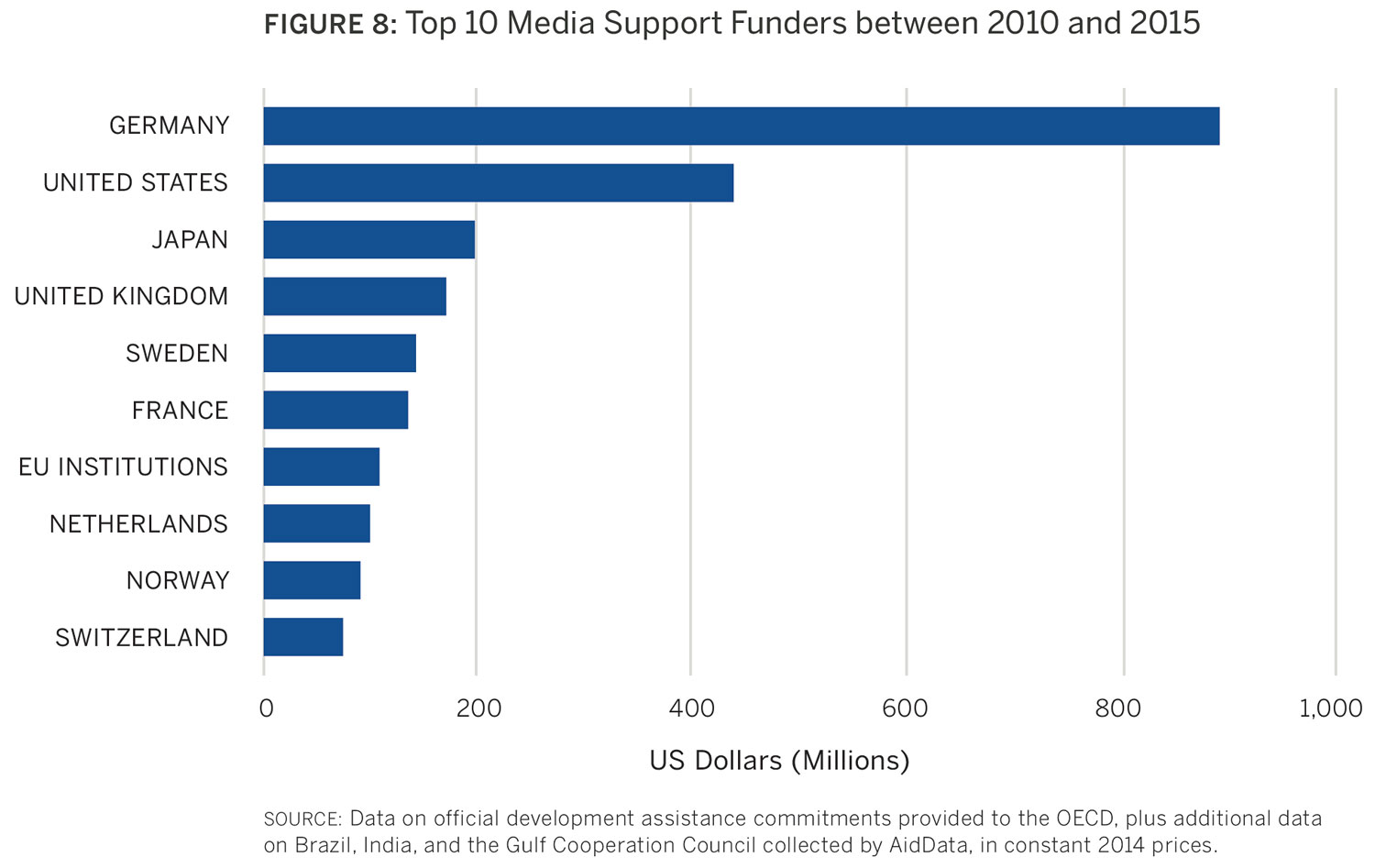 As previously mentioned, the fact that Germany tops this list is somewhat misleading, as the German government includes the core funding allocated to its international broadcaster, Deutsche Welle, in its media support figures whereas other countries have not done so. The next graph, Figure 9, shows what the top 10 list would look like with funding for international broadcasting removed. It shows that the United States leads the top 10 with a slight reordering of the main players and the entry of Denmark to the top group. The Netherlands drops out of the top 10 here, as its large grant to Radio Netherlands ($76 million over four years) has been removed.
As previously mentioned, the fact that Germany tops this list is somewhat misleading, as the German government includes the core funding allocated to its international broadcaster, Deutsche Welle, in its media support figures whereas other countries have not done so. The next graph, Figure 9, shows what the top 10 list would look like with funding for international broadcasting removed. It shows that the United States leads the top 10 with a slight reordering of the main players and the entry of Denmark to the top group. The Netherlands drops out of the top 10 here, as its large grant to Radio Netherlands ($76 million over four years) has been removed.
News Production Attracts Large Grants Figure 10 expresses these data in another way, breaking down into funding categories the financial flows to media support provided by the top 10 donors from 2010 to 2015. The following patterns can be discerned in Figure 10:
- Germany’s strong emphasis on financial support for news production (partly explained by its inclusion of Deutsche Welle, discussed above)
- The United States’, Sweden’s, Norway’s, and Switzerland’s rather balanced investments across all categories of media development
- France’s and the Netherlands’ strong support for news production (also partly explained by the inclusion by both donors of their own international broadcasters)
- The poor support for research across the board (showing up as tiny slivers at the top of the bars for Germany, the United States, United Kingdom, Sweden, the Netherlands, and Norway).
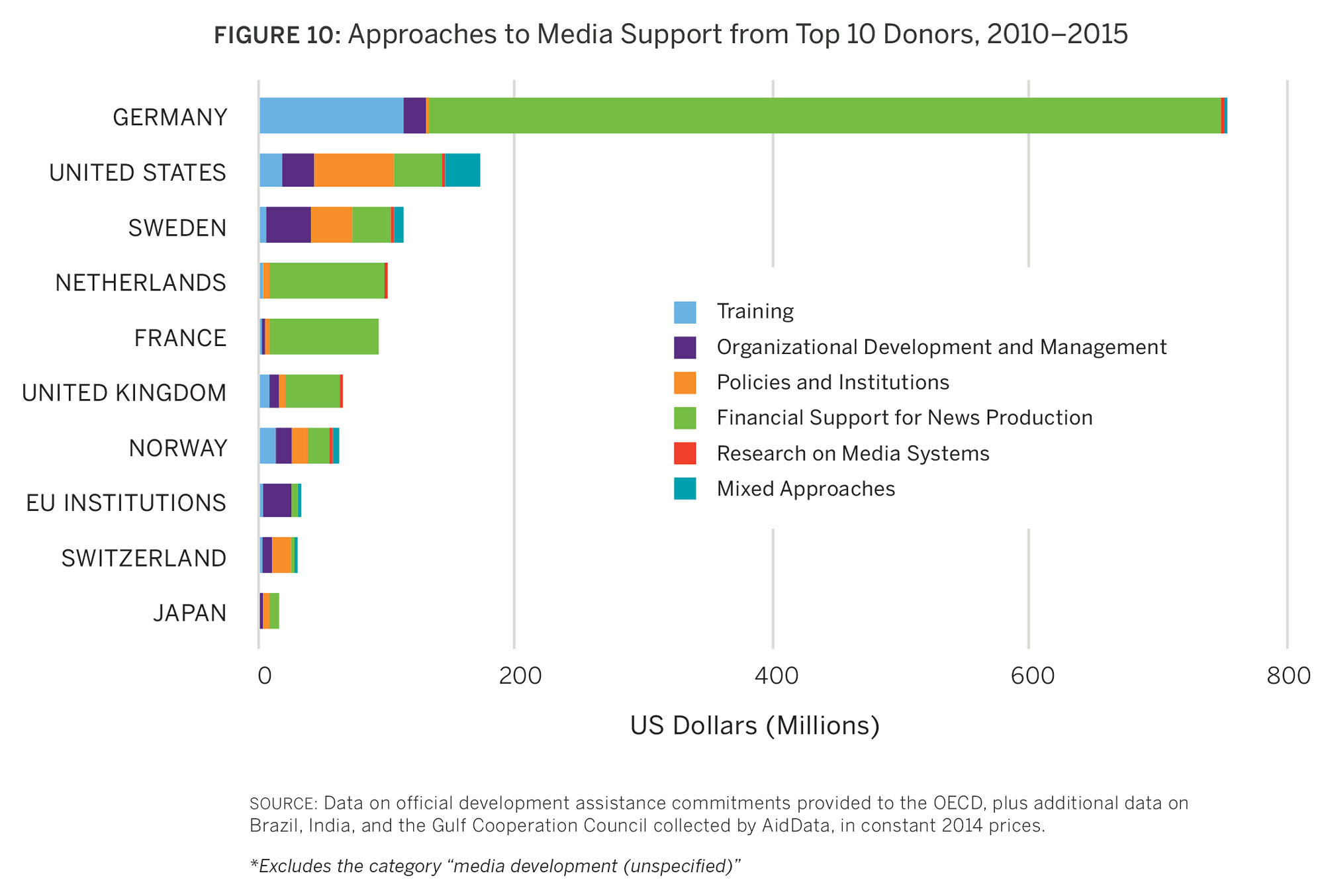
The Recipients of Assistance to Media Development
Asia Is the Leading Recipient of Funding
As shown in Figure 11, the Asian region is the biggest beneficiary of media support funds worldwide if taken cumulatively over the six-year period, but taken year by year sub-Saharan Africa took first place in some years (2010, 2011, and 2015) and Asia in others (2012, 2013, and 2014).
The following list shows which regions the top 10 donors prioritized for media support in terms of largest donor flows (in descending order):
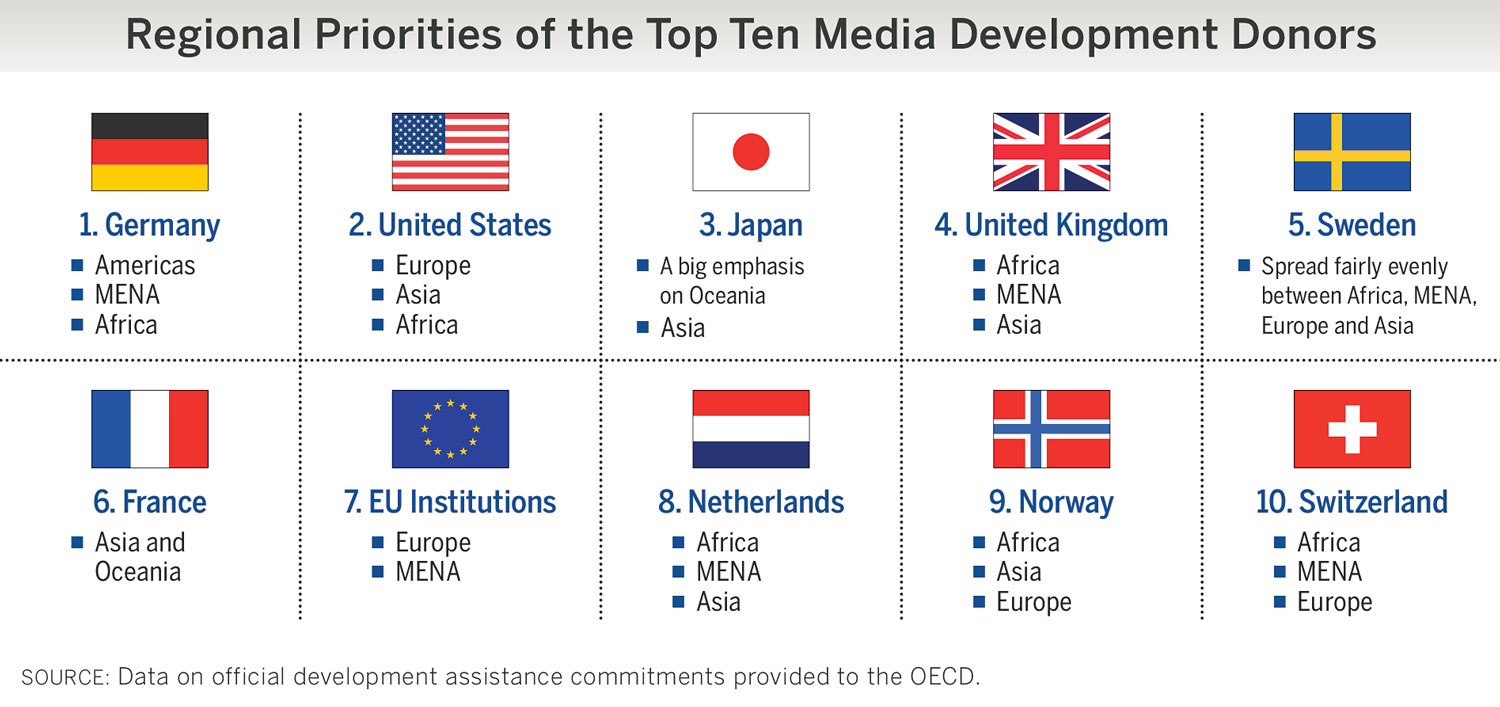 This report was the first to analyze support to media emanating from Gulf Cooperation Council countries. Given this new data, we were interested to see where the bloc’s members have been directing aid to the media sector from 2010 to 2015). Of the seven members of the Gulf Cooperation Council, only the United Arab Emirates provided any support that qualifies as media development as defined for this report, and that assistance was largely directed to Afghanistan.
This report was the first to analyze support to media emanating from Gulf Cooperation Council countries. Given this new data, we were interested to see where the bloc’s members have been directing aid to the media sector from 2010 to 2015). Of the seven members of the Gulf Cooperation Council, only the United Arab Emirates provided any support that qualifies as media development as defined for this report, and that assistance was largely directed to Afghanistan.
Is Aid Going Where It Is Needed Most?
Table 3 raises questions about whether funds are going where they are most critical—to the countries where freedom of information is under the gravest threat and where independent journalists are most needed to shine a light on government. Because flows to the media sector are relatively small, a few large projects can dramatically change the distribution. For instance, three exceptionally large grants (together worth over $183 million) to the governments of Sri Lanka and Indonesia (from Japan and France, respectively) to digitalize and improve terrestrial TV infrastructure account for their prominence in Table 3.
Other regions and countries, however, are consistently among the top recipients. The Middle East region in general, and countries including Burma, Belarus, and Tunisia, seem to be privileged by donors, probably on account of their genuine needs and opportunities in the realm of free expression. Conflict and post-conflict countries such as Ukraine, South Sudan, and Afghanistan also consistently rank highly. However, some countries most conspicuously in need of assistance—such as Eritrea, Cuba, Uzbekistan, and Vietnam (all at or near the bottom of the international press-freedom indexes)—do not make an appearance, presumably owing to the difficulty of providing media assistance in those countries.31
China's State Funding to Foreign Media Sectors
China Spending Heavily on ICT Infrastructure
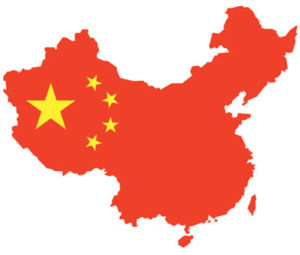 In this report we are analyzing China’s international funding of media systems separately. The data show that the Chinese government and its agencies have a different approach to this sector of aid from OECD members and other DAC participants. China’s support is almost exclusively for ICT infrastructure, with the remainder for broadcasting infrastructure and organizational development and management of media outlets. By contrast, the OECD support (top five donors shown in Figure 12 along with China) is much more diverse and focuses on developing journalism, news, and freedom of the press. In addition, China’s aid is mostly in the form of loans whereas that of the OECD is mainly in the form of grants. For this report, only five years of data (2010–2014) on Chinese support for media and ICTs were available. The analysis in this section focuses only on the Chinese spending that appears to be similar to official development assistance: financing directed toward a lower or middle-income country that has a grant element of at least 25 percent (this includes loans given at lower than market value where the savings is equivalent to a grant of the same proportion).32
In this report we are analyzing China’s international funding of media systems separately. The data show that the Chinese government and its agencies have a different approach to this sector of aid from OECD members and other DAC participants. China’s support is almost exclusively for ICT infrastructure, with the remainder for broadcasting infrastructure and organizational development and management of media outlets. By contrast, the OECD support (top five donors shown in Figure 12 along with China) is much more diverse and focuses on developing journalism, news, and freedom of the press. In addition, China’s aid is mostly in the form of loans whereas that of the OECD is mainly in the form of grants. For this report, only five years of data (2010–2014) on Chinese support for media and ICTs were available. The analysis in this section focuses only on the Chinese spending that appears to be similar to official development assistance: financing directed toward a lower or middle-income country that has a grant element of at least 25 percent (this includes loans given at lower than market value where the savings is equivalent to a grant of the same proportion).32
The enormous size of China’s aid flows is striking: they dwarf those to media development and ICT infrastructure from the OECD donors. From 2010–2014, and including both country’s spending on ICT infrastructure, China gave twice as much to the media sector as Germany, the largest of the OECD donors.33
For the five years from 2010 to 2014, all the DAC participants and other bilateral donors together funded media development to the tune of $2.2 billion, with another $639 million going to support ICT infrastructure; by contrast, China’s funding to foreign media sectors was just $175 million, while China gave about $2 billion to ICTs through what appears to be grants or concessional loans.
The next graph, Figure 13, looks at the geographical distribution of Chinese media support and shows a preponderance of aid in this sector going to Africa.
China is investing in communications (mostly ICT infrastructure) in African countries, and not, as might be expected, just in its immediate neighbors or in its most obvious allies. One possible explanation for this is that China is using concessional financing to support ICT infrastructure in African countries where that infrastructure is weakest and where China has other economic interests, such as in agriculture or mining. Our data give a fascinating glimpse of the kinds of media and ICT projects that China funds:
- TV broadcasting van in Tanzania: In 2014, China donated a $5 million broadcasting van and other equipment to the Tanzanian national broadcasting corporation.
- Mobile telephony in Russia: In 2014, Russia’s mobile phone operator MegaFon and China Development Bank signed an agreement to arrange financing of $500 million to develop its mobile networks and purchase equipment from Huawei Technologies Co. Ltd.
- TV screen in Zimbabwe for ZANU-PF: In 2011, the Chinese spent $20,000 to build a television screen in the First Street mall in Zimbabwe to show Zimbabwe Broadcasting Corporation TV programs and play Zanu PF jingles 24 hours a day.
These and the other Chinese-funded projects in the database (a total of 59) deserve further analysis, though it is immediately evident from the data that China gives most of its media-related aid to governments and not to NGOs. The other characteristic of China’s aid that distinguishes it from that of OECD donors is that Chinese assistance to media and communications is almost all in the form of loans (98 percent loans and export credit) and designed to benefit Chinese industry and Chinese companies, as indeed is the case for most of China’s official finance to developing countries.34
Finally, before leaving the subject of China, it is interesting to note that our database covers only declared flows and does not include China’s funding for its international broadcaster, CCTV, or its other media instruments (e.g., the international editions of the People’s Daily and the international work of the Xinhua News Agency) that China has been using to shape the information space globally.35
Future Horizons for Media Support
 This brief survey of the most up-to-date figures available for official media assistance has discerned some patterns and tried to tell a story, despite the challenges of interpreting a dataset that reflects the imperfections of inconsistent donor reporting.
This brief survey of the most up-to-date figures available for official media assistance has discerned some patterns and tried to tell a story, despite the challenges of interpreting a dataset that reflects the imperfections of inconsistent donor reporting.
The picture that emerges is that donors continue to be marginally committed to funding media. The overall levels of support are still a fraction of overall development funding. Media support is always going to be small relative to funding for health, education, clean water, and other capital-intensive fields, but this dataset shows that media funding is also just a fraction of funding for other areas of development, which implies that donors still harbor reservations about the media field, despite its proven potential to promote good governance.
Furthermore, we cannot say, based on the figures, that all media assistance is given to support the values of good governance and democracy. On the contrary, portions of media development still seem motivated by a notion of technological transfer, soft power, or even by economic self-interest. Rather than going to support independent news media in developing countries, some of the largest grants have gone to the donor countries’ own international broadcasters (such as Deutsche Welle, Radio Netherlands, BBC, and so on), or to support initiatives in the media sector led by recipient governments. Apart from the international broadcasting grants, among the largest projects in the OECD database, i.e., those with a value of over $10 million, about 10 percent are flows to developing-country governments, mostly in the form of support to hardware and media infrastructure.36 While this government-to-government aid is certainly an investment in a developing country’s media and entertainment industry, this is not necessarily supporting civil society and is unlikely to be supporting free, independent, and plural journalism that holds its government to account. The comparison with China, where soft power and economic self-interest dominate, brings this aspect into stark relief. OECD countries frequently support independent media within a strategy of promoting democracy and governance, and as an intrinsic public good, but there is still much to be done to more effectively direct media support towards these nobler objectives.
It is clear that specific areas of media assistance that CIMA and its partners have long been advocating for are still not receiving the attention they deserve, in particular research and media literacy, both of which remain relatively poorly funded. What is more, it is not at all clear that organizations and activists in countries where free speech is most endangered are necessarily receiving the support they need.
On the plus side, funding levels appear to be holding steady and there are healthy sums being channeled toward what appear to be genuine efforts to enhance governance and democracy and freedom of expression. For example, we estimate that about $270 million in aid was spent over six years to promote the kind of policies and institutions that support independent journalism, and an estimated $232 million was spent over the same period on training and skills for journalists.37 These are not trifling amounts. In addition, donors appear close to matching their professed priorities, with funding going to support investigative journalism, promote free media in conflict areas, and improve access to information. And, although the largest projects are big infrastructural projects that seem to be supporting state broadcasting, a significant portion of all media funding by the OECD appears to be channeled through NGOs and civil society.
But there is still a long way to go before donors start responding to country-level demand, as the mismatch with CIMA’s in-country consultations shows. Little is done currently to support knowledge creation (including research), build coalitions, and open the spaces needed for dialogue and discussion on media systems—so that a broad array of stakeholders in developing countries can formulate a clear vision of the media systems they want—with donors supporting them in that vision. Investing in this side of the equation is going to be essential for meaningful, effective responses to the growing challenges. Government-to-government support for the media, meanwhile, needs to be refocused on supporting reform agendas and genuine public service media, where possible. And finally, there is little evidence that in the 2010–2015 period donors were able to marshal a clear and coherent response to the growing threats to digital and internet freedoms. Subsequent analysis of aid flows by CIMA will pay close attention to this.
In many ways, these data raise more questions than they answer. But it is the most complete picture available to date and it can, at the very least, serve as a baseline for future research in the area of donor support for media development. Looking to the future, it is clear that there is still a need for better-described, reliable, and consistently measured data, and a common understanding among donors of how to code this kind of aid. CIMA is making the data for this report publicly available to encourage further research and analysis.
That said, beyond the figures on aid flows, and beyond even donor strategies, there remain many other unanswered questions about how journalists, civil society groups, reform-minded officials, and other actors can structure their media systems to meet the new and evolving threats to freedom of speech and democratic dialogue. Donors, it should be noted, do not hold the solutions to these more fundamental problems, but with some effort perhaps they can better channel their support to those who do.
Methodology
The dataset analyzed in this report was provided by AidData, a research lab at the College of William & Mary that tracks foreign assistance projects worldwide and shares information about them in ways that can help inform policy makers and development specialists.
AidData compiles its data from a number of publicly available sources, including the OECD’s database and other government reporting. In the cases of countries that do not report aid flows like China and some GCC donors, AidData uses its Tracking Underreported Financial Flows (TUFF) methodology to systematically triangulate information across government and recipient sources, embassy cables, IMF reports, news stories and press releases to create a detailed project-level dataset. All of the data were verified and then formatted in a similar fashion as the OECD’s database. AidData’s dataset is thus the most comprehensive collection of information about international aid flows that exists.
Since the objective of CIMA’s research was to compile the most comprehensive accounting of media development aid flows, and since the support to media development is often classified in different ways by different donors, we decided to analyze all projects that could potentially be classified as support for media development. To do this, the specialists at AidData provided CIMA will all of the projects in the AidData database that were listed under the following sector codes:
- 15153 Media and free flow of information 22010 Communications policy and administrative management
- 22020 Telecommunications
- 22030 Radio/television/print media
- 22040 Information and communication technology
At the time when this research project began, the most up-to-date project-level data available was from 2015. Thus, the analysis was restricted to the period from 2010 to 2015. There were approximately 21,000 distinct development projects included in the original dataset compiled for analysis.
CIMA staff and a team of consultants then analyzed each individual project based on its title and description. Each project was then coded and sorted based on this information. For reliability, the entire database was independently coded by at least two individuals, and any disagreements on codes were later arbitrated by committee. Ultimately, only approximately 5,500 of the original 21,000 projects were identified to be media development assistance of some kind. An additional 1,000 projects were identified as public diplomacy efforts or ICT infrastructure investments that are not media development assistance per se, but often overlap with those efforts. In this report, we provide some limited analysis on these projects as they can shed light on the broader development agenda as it relates to news media ecosystems.
Annex
ANNEX 1: Subthemes in Media Support Projects in US Dollars, 2010–2015 (from largest to smallest)
ANNEX 2: Development Data Sources The base data for this report was pulled from several AidData databases in an effort to provide the most complete picture of media development financing from both DAC and non-DAC donors. The sources include the following:
- AidData’s Core Research Release, version 3.0: This dataset standardizes official project-level commitment data on development flows from bilateral, multilateral, and private donors ranging from 1947 through 2013. The main source for data is the OECD CRS. AidData supplements this data from official data provided by donor agencies that either have better project descriptions, more comprehensive coverage in their official documents compared to the data provided to the OECD CRS. This includes countries that are not members of the OECD-Development Assistance Committee (OECD-DAC) and do not systematically report their project-level data to the OECD-CRS. Example countries include India and Brazil. For these donors, the 3.0 Research Release includes available data only for 2010. In addition, AidData supplemented the 3.0 version with 2014 and 2015 commitment data available from the OECD CRS for this report.
- Global Chinese Official Finance Dataset, version 1.0: This dataset captures the known universe of officially-financed Chinese projects in 5 regions of the world from 2000–2014 (including Africa, the Middle East, Asia and the Pacific, Latin America and the Caribbean, and Central and Eastern Europe). It includes concessional and non-concessional sources of funding from Chinese government institutions (including central, state or local government institutions) with development, commercial, or representational intent. More specifically, it captures (a) highly concessional, Chinese development projects that meet the OECD’s criteria for Official Development Assistance (ODA); and (b) officiallyfinanced Chinese projects that lack development intent or are provided with higher interest rates and lower grant elements (i.e. projects that fall within the OECD’s criteria for “Other Official Flows”, or OOF). Chinese ODA represents “Chinese aid” in the strictest sense of the term, but Chinese official finance (ODA and Other Official Flows) is sometimes used as a broader definition of aid. AidData’s dataset allows users to disaggregate Chinese official finance into its constituent parts and determine if they wish to use a narrow or broad definition of aid. This data is collected using the Tracking Underreported Financial Flows (TUFF), which is a rigorous, replicable methodology that triangulates open-source information to systematically create project-level data detailing official finance originating from opaque donors and lenders. For more information, see www.aiddata.org/china.
- Official Finance Datasets for Saudi Arabia, Qatar, and Kuwait: These datasets are currently internal datasets collected by AidData to track official finance from these GCC donors. The data has been collected using the TUFF methodology as well and covers 2010–2015.
Footnotes
- Freedom House, “Press Freedom’s Dark Horizon,” Freedom of the Press Index, 2017, https://freedomhouse.org/report/freedom-press/freedom-press-2017, accessed April 25, 2018.
- Edelman, 2018 Edelman Trust Barometer: Global Report (2018), https://cms.edelman.com/sites/default/files/2018-01/2018%20Edelman%20Trust%20Barometer%20Global%20Report.pdf.
- Felix Richter, “25 percent of Global Ad Spend Goes to Google or Facebook,” Statista, December 7, 2017, https://www.statista.com/chart/12179/google-and-facebook-share-of-ad-revenue/.
- A research lab at William & Mary, AidData equips policymakers and practitioners with better evidence to improve how development investments are targeted, monitored, and evaluated. AidData’s Transparent Development Footprint program tracks the large and growing volume of investments made by non-Western governments, companies, and private philanthropies. For more information, see www.aiddata.org/tdf.
- At the time the data was collected for the report, only 2010 flows were available for India and Brazil, so the totals for those countries to media development is likely under-representing their full investment in the sector. Similarly, the data on Chinese official finance covers 2010–2014, while data from other donors covers the full 2010–2015 time period.
- Members of the DAC are Australia, Austria, Belgium, Canada, Czech Republic, Denmark, European Union, Finland, France, Germany, Greece, Hungary, Iceland, Ireland, Italy, Japan, Korea, Luxembourg, The Netherlands, New Zealand, Norway, Poland, Portugal, Slovak Republic, Slovenia, Spain, Sweden, Switzerland, United Kingdom, and United States.
- By developing countries, we mean the low and middle-income countries, which are typically the recipients of official development assistance.
- Shanthi Kalathil, A Slowly Shifting Field: Understanding Donor Priorities in Media Development, (Washington, DC: Center for International Media Assistance, 2016), https://www.cima.ned.org/publication/slowly-shifting-field/; Daniel O’Maley, “Tracking Media Development Support: An Update on 2016 Funding Levels,” (Washington, DC: Center for International Media Assistance, 2018), https://www.cima.ned.org/blog/tracking-media-development-donor-support-update-2016-funding-levels/.
- Non-DAC member countries that report to the OECD database include Brazil, Estonia, India, and Lithuania; multi-lateral donors that report to the OECD include the African Development Bank, African Development Fund, Arab Fund for Economic and Social Development, Inter-American Development Bank, Organization for Security and Co-operation in Europe, UN Agencies (UNICEF, UNDP, UNPBF, and UNFPA) and the World Bank; the Bill and Melinda Gates Foundation is the only private donor reporting to the OECD that supports media development.
- Eduardo Gonzalez Cauhapé-Cazaux and Shanthi Kalathil, 2015, “Official Development Assistance for Media: Figures and Findings. A Report by CIMA and the OECD”, Washington DC: Center for International Media Assistance, available at http://www.cima.ned.org/wp-content/uploads/2015/03/CIMA-Official-Development-Assistance.pdf Shanthi Kalathil, 2016“A Slowly Shifting Field: Understanding Donor Priorities in Media Development,” Washington, DC: CIMA, available at https://www.cima.ned.org/publication/slowly-shifting-field/; and Daniel O’Maley, “Tracking Media Development Support: An update on 2016 Funding Levels,” Washington DC: CIMA, available at https://www.cima.ned.org/blog/tracking-media-development-donor-support-update-2016-funding-levels/
- For good summaries of the evidence linking media development to other democratic and developmental outcomes, see the section on media of the latest World Development report (World Bank. 2017. Governance and the Law: World Development Report 2017. Washington D.C.: The World Bank Group), and also Norris, Pippa, ed. 2009. Public Sentinel: News, Media, Governance, and Reform. Washington, D.C.: The World Bank.
- Cauhapé-Cazaux and Kalathil, Official Development Assistance for Media, 5.
- Ibid.
- Michelle Foster, Media Feast, News Famine: Ten Global Advertising Trends That Threaten Independent Journalism, (Washington, DC: Center for International Media Assistance, 2017).
- Anna Schiffrin, ed., In the Service of Power: Media Capture and the Threat to Democracy, (Washington DC: Center for International Media Assistance, 2017).
- Daniel Arnaudo, A New Wave of Censorship: Distributed Attacks on Expression and Press Freedom, (Washington, DC: Center for International Media Assistance, 2018), https://www.cima.ned.org/publication/new-wave-censorship-distributed-attacks-expression-press-freedom/.
- Mariana Rodríguez and Elizabeth Zechmeister, Media Pluralism, Public Trust, and Democracy: New Evidence from Latin America and the Caribbean, (Washington, DC: Center for International Media Assistance, 2018), https://www.cima.ned.org/publication/media-pluralism-public-trust-democracy-new-evidence-latin-america-caribbean/.
- Mark Nelson, “Combating the Menace of Media Capture” in Anya Schiffrin, ed., In the Service of Power: Media Capture and the Threat to Democracy (Washington DC: Center for International Media Assistance, 2017).
- O’Maley, “Tracking Media Development Donor Support.”
- Bilateral donors include Australia, Austria, Belgium, Brazil, Canada, Czech Republic, Denmark, Estonia, Finland, France, Germany, Greece, Iceland, India, Ireland, Italy, Japan, Korea, Lithuania, Luxembourg, Netherlands, New Zealand, Norway, Poland, Portugal, Slovak Republic, Slovenia, Spain, Sweden, Switzerland, United Arab Emirates, United Kingdom, and the United States. Multilateral donors include the African Development Bank, African Development Fund, Arab Fund for Economic & Social Development, EU Institutions, Inter-American Development Bank, Organization for Security and Co-operation in Europe, United Nations Children`s Fund, United Nations Development Programme, United Nations Peacebuilding Fund, United Nations Population Fund, and the World Bank–International Development Association. Private donors include the Bill & Melinda Gates Foundation.
- Under the category loans we included all ODA loans. Under grants we included equity, equity investments, and ODA grants.
- See, for instance, Schiffrin, Same Beds, Different Dreams: Charitable Foundations and Newsroom Independence in the Global South (Washington DC: Center for International Media Assistance, 2017); O’Maley, “Tracking Media Development Donor Support,” CIMA Blog, https://www.cima.ned.org/blog/tracking-media-development-donor-support-update-2016-funding-levels/; and the database and original reports by Media Impact Funders: https://mediaimpactfunders.org/original-reports/.
- The 10 project beneficiaries funded between 2010 and 2015 by the Gates Foundation in our database were University of Washington Foundation, Fondation EurActiv Politech, Stichting European Journalism Centre, University of Southern California, Digital Kitchen, Media Trust, New Venture Fund, National Public Radio, and Participant Media.
- O’Maley, “Tracking Media Development Donor Support.”
- Anya Schiffrin, Same Beds, Different Dreams? Charitable Foundations and Newsroom Independence in the Global South, (Washington DC: Center for International Media Assistance, 2017), https://www.cima.ned.org/resource/beds-different-dreams-charitable-foundations-newsroomindependence-global-south/, 7.
- For evidence on the ingredients of a successful media reform movement, see Maria Soledad Segura and Silvio Waisbord, Media Movements: Civil Society and Media Policy Reform in Latin America (London: Zed Books, 2016); Des Freedman et al., eds., Strategies for Media Reform: International Perspectives (New York: Fordham University Press, 2016).
- Note that in CIMA’s previous report on the OECD data (Cauhapé- Cazaux and Kalathil, Official Development Assistance for Media), Germany’s funding for Deutsche Welle showed up under the “Public Diplomacy” category, whereas here it shows up under our “Financial Support to News Production” category
- See O’Maley, “Tracking Media Development Donor Support.”
- Ibid., 4.
- These consultations—which were hosted in Bogotá (Latin America), Jakarta (Southeast Asia), and Durban (subSaharan Africa)—brought together media managers, journalist associations, and trade groups, freedom of expression advocacy groups, representatives of regional blocs, regulators, policy makers, researchers, and public interest lawyers, among others. Participants shared their opinions on the major issues confronting media in their regions in a survey prior to the event, and this survey provided the starting point for the participatory discussions that in each case produced a consensus around three or four issues, which varied from region to region.
- For example, Freedom House, “Freedom of the Press Index 2015,” accessed May 7, 2018, https://freedomhouse.org/report/freedom-press/freedom-press-2015#.WvDAZIgvzIU.
- From the AidData database, we have included projects that are categorized as “ODA-like” and a residual category called “Vague Official Finance,” which are projects that are known to be officially financed, but with inadequate information to categorize as either ODA or OOF. To categorize a project as ODA, AidData requires evidence from one or more sources showing that loan was at least 25 percent concessional.
- Data for China cover five years (2010–2014), whereas data for OECD/GCC cover six years (2010–2015).
- AidData’s research on China’s overseas development aid can be found in its 2017 report By the Numbers: China’s Global Development Footprint, http://aiddata.org/china
- Samuel Osborne, “China State Broadcaster CCTV Launches Global Media Network to Help Rebrand China Overseas,” Independent, December 31, 2016, https://www.independent.co.uk/news/world/asia/china-central-television-launches-globaltelevision-network-propaganda-xi-jinping-a7503216.html; Shanthi Kalathil, Beyond the Great Firewall: How China Became a Global Information Power, (Washington, DC: Center for International Media Assistance, 2017), https://www.cima.ned.org/wp-content/uploads/2017/03/CIMA-Beyond-the-Great-Firewall_150ppi-forweb.pdf.
- Among the top 20 biggest grants and loans (excluding international broadcasting) we find the following: two big loans ($110 million and $19 million) to the Sri Lankan government from Japan for digitalization of terrestrial TV infrastructure and one big loan from France to the Indonesian government ($64 million) to improve TV stations; Approximately 10 percent of grants and loans are going to government, local government, and line ministries in-country—i.e., a total of $273,646,222 out of $2.7 billion (see Methodology, Note 5.)
- These figures were calculated through a basic extrapolation, assuming that support for these areas is found in consistent amounts among projects in the dataset with only rudimentary descriptions.

